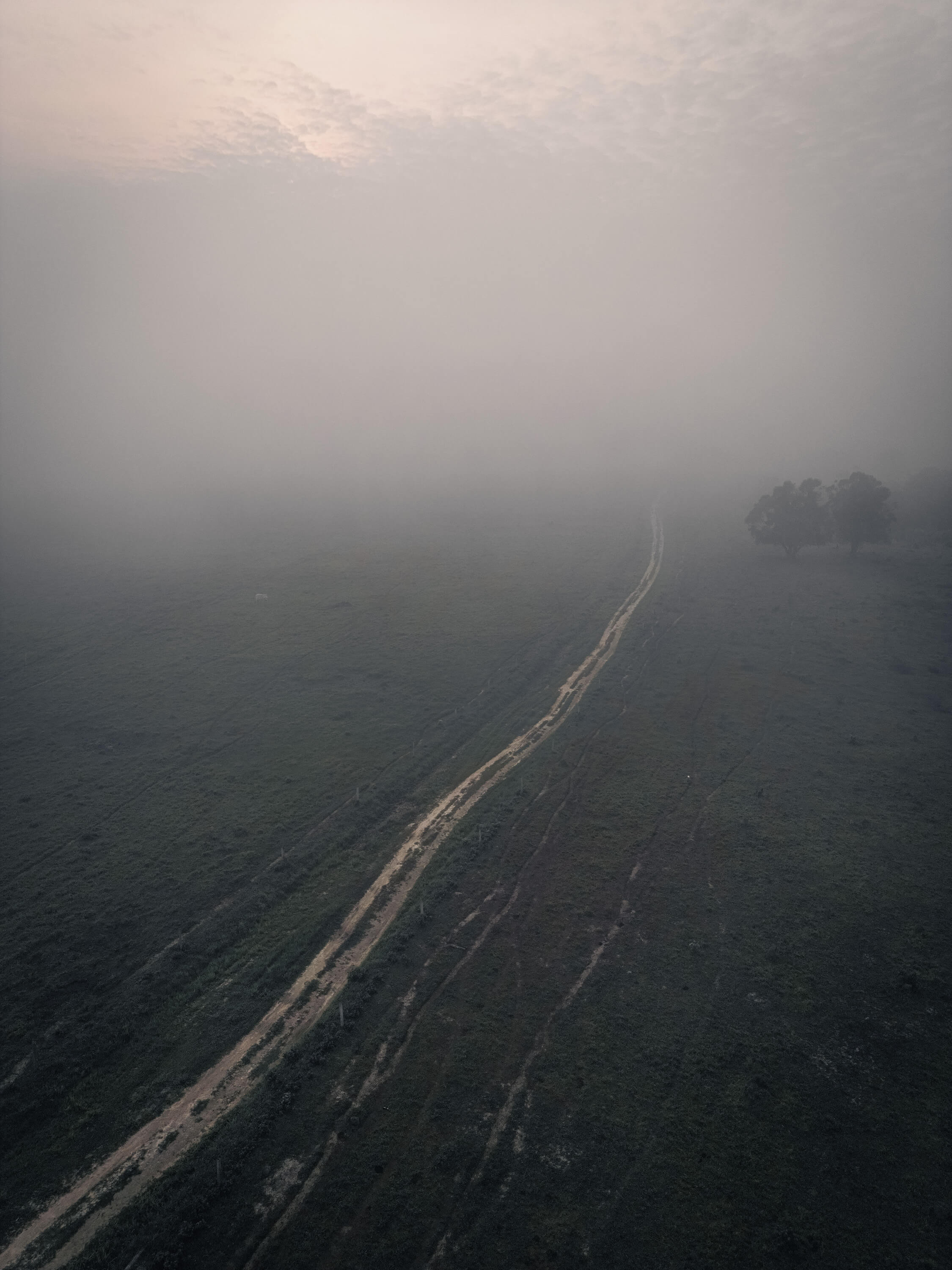
Coverage by
PUBLISHED 25/09/2024
VICTOR GALEANO – DIRECTION/JOURNALIST/PHOTOGRAPHY JUAN MIGUEL ÁLVAREZ • JOURNALIST/WRITER
CARLOS PIEDRAHITA – JOURNALIST/AUDIO-VISUAL FILMMAKING • NATHALY HURTADO TORRES – PRODUCTION
LAURA SOFÍA MEJÍA – EXECUTIVE PRODUCTION • CAMILO ALZATE – JOURNALIST/WRITER
STEVEN HERNÁNDEZ – PROGRAMMING • SEBASTIÁN LÓPEZ –WEB/GRAPHIC DESIGN
ANDRÉS RIVERA – GRAPHIC DESIGN • ANGIE SALAZAR – DIGITAL COMMUNICATION
MARIEL BEJARANO – COMMUNITY MANAGEMENT • DATA PROCESSING – MONGABAY LATAM
SPECIAL THANKS
JHON PERDOMO – COMMANDER OF THE VOLUNTEER FIRE BRIGADE OF CALAMAR, GUAVIARE.
MARGARITA MARÍN, CARLOS PERDOMO, ÁLEX GUZMÁN AND THE VOLUNTEER TEAM OF THE FIRE BRIGADE OF CALAMAR, GUAVIARE.
THE DATA USED FOR THE GRAPH VISUALIZATION WAS COMPILED AND PROVIDED BY MONGABAY LATAM.
The data used for the visualization of the graphs was collected and provided by Mongabay Latam.
FINANCED BY:

WITH THE SUPPORT OF:

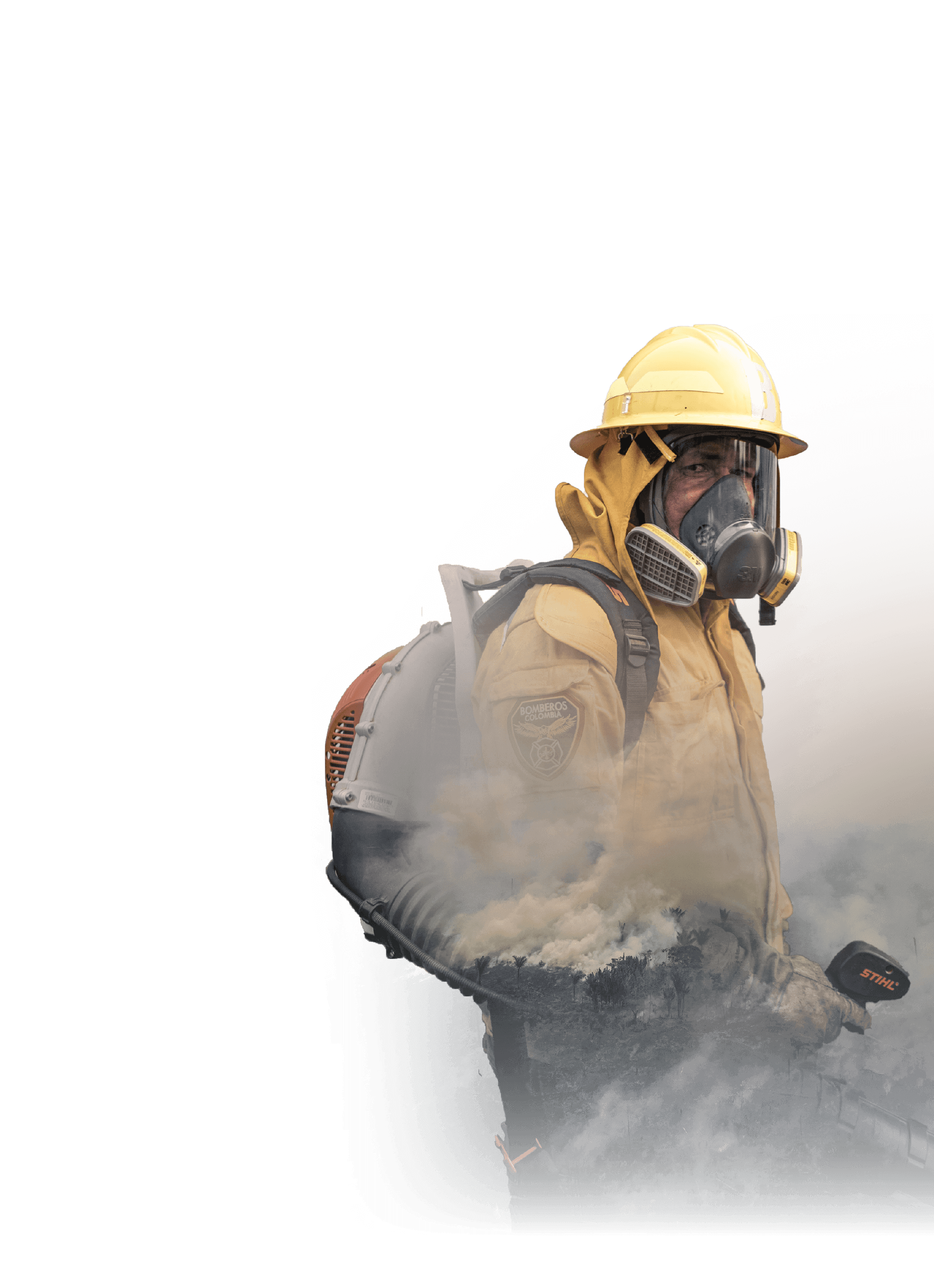
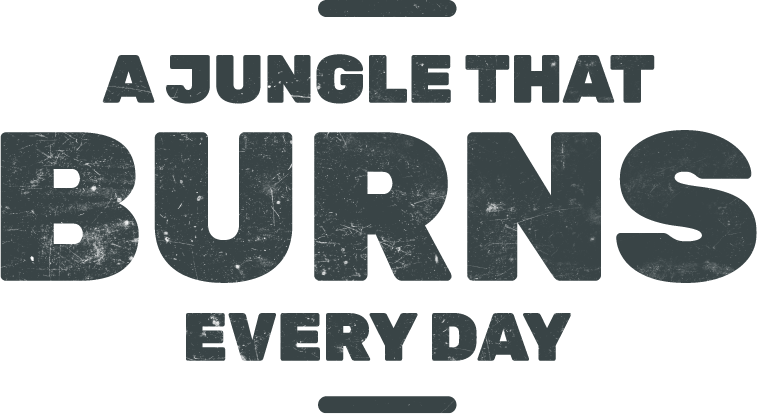
Text: Juan Miguel Álvarez
Photography: Víctor Galeano
1
His name is John Perdomo Barón and he still has a Bogotá accent in his words. He is 55 years old and can hum 80s pop songs. He is not very tall, he fits the expression “average height.” But he is broad and has strong arms. He has big ears and small eyes, he walks lightly and goes around talking and smiling and telling jokes and greeting everyone. He is the commander of the Calamar Fire Station, the forest fire response team on the northern side of the Colombian Amazon, the region where the Serranía del Chiribiquete Natural Park is located.

Station Commander Calamar Firefighters
—The emergency dictates how to work —he says—. One thing is to enter a fire, and another is to have a fire come upon us.
We are sitting at the dining table at the station. There is a thermos of coffee that seems to never run out and the remains of a pinched loaf of bread. It is hot, the usual heat of a morning in the jungle tropics: 28 degrees Celsius that promises to reach 35 degrees past noon.
—Time is not really ours —he says—. Time belongs to the emergency. One does not know when it will appear.
It is nine thirty in the morning and John opens his work bag to show us what he is carrying inside: spare smoke masks, sharp knives, a flashlight, a canteen, gloves, some small tools and a bag with pieces of panela.
—A firefighter eats a whole block. —He smiles—. That is by putting out a fire and chewing panela.
Under the table two dogs are playing at biting everything. And other firemen come and go from the kitchenette, go to the laundry room and then go up to their rooms. There are four containers in the station that serve as apartments. Two below and two above, connected by an external staircase with metal steps. The inner courtyard is crossed by clothes hangers.
«Do you want panela?» asks John, closing the zipper. «The backpack is always ready. You must learn to control your body to carry equipment. Not just the backpack, but the devices to put out fires, too»
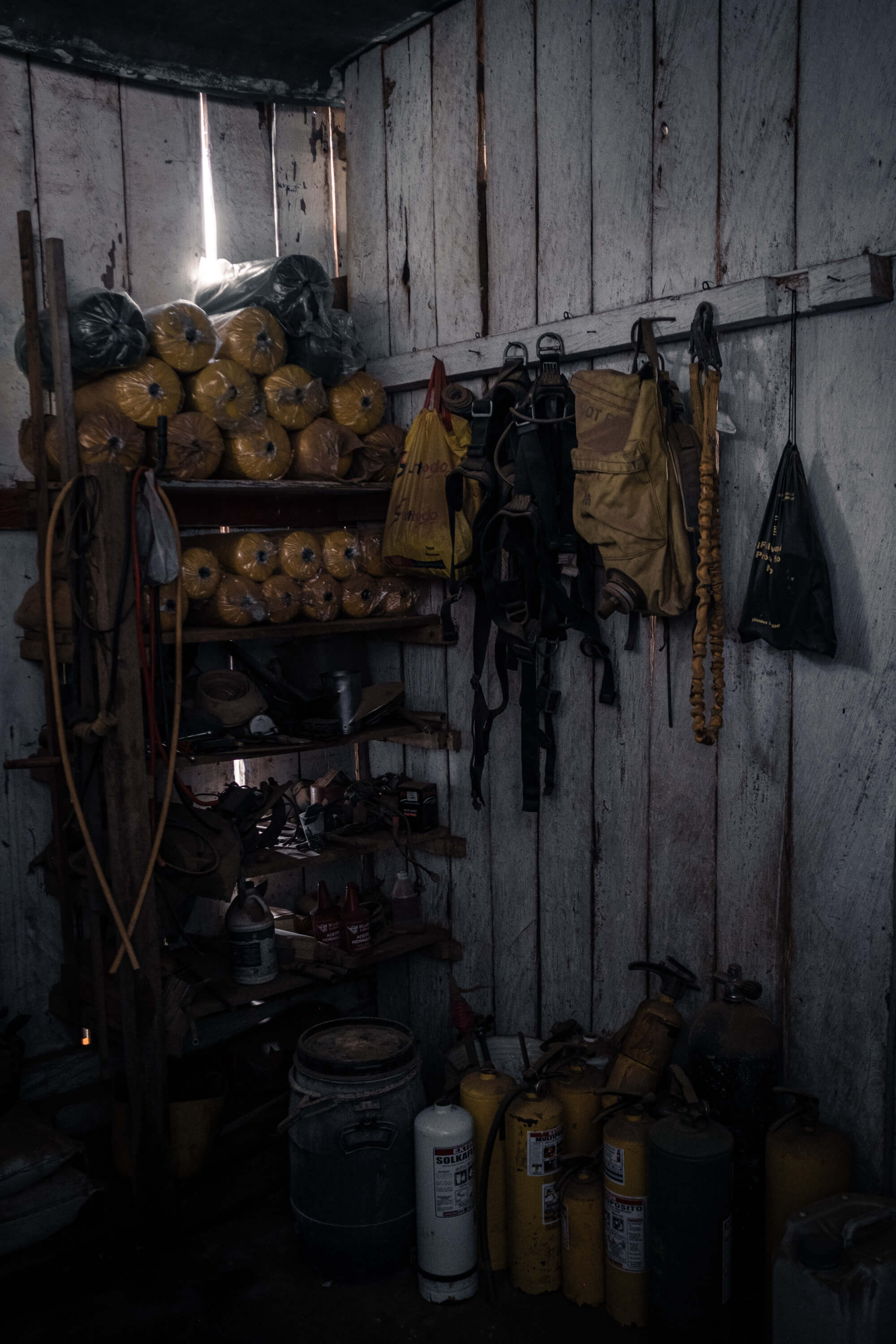
It is clear that John Perdomo prefers the word “candela” to refer to his adversary. He does not say fire or flames or conflagration. Much less is he going to say flame or bonfire. Candela as the raw material of disaster. And smoke as a warning. John looks at his wristwatch and says that it is already ten in the morning, a critical time in sunny seasons.
—Until twelve is the most dangerous time. It is the time of forest fires. People set fire to their pastures to take advantage of the midday heat. And it gets out of control. And they go and call us. What is it you smell?
It is true: the air is filled with smoke. A faint mixture. Enough to distinguish that it smells like a wooden match when it has burned down to the base. Someone nearby is cooking on a wood stove. It must be that. John says it’s not that, and I don’t see that he is worried about the possibility of a forest fire on the outskirts of town.
—They would have called us already.
We raise the drone to fly over the surroundings and on the screen, we can see the murky colour that clouds the horizon. But there are no flames in sight, nor a column of smoke expelled by a domestic bonfire. John looks at us with a hint of mockery, as if he were about to reveal the secret of his giggle.
“There are no fires around here,” he says. “The smoke comes from far away. The Amazon rainforest is burning somewhere. And it is like this every day.”
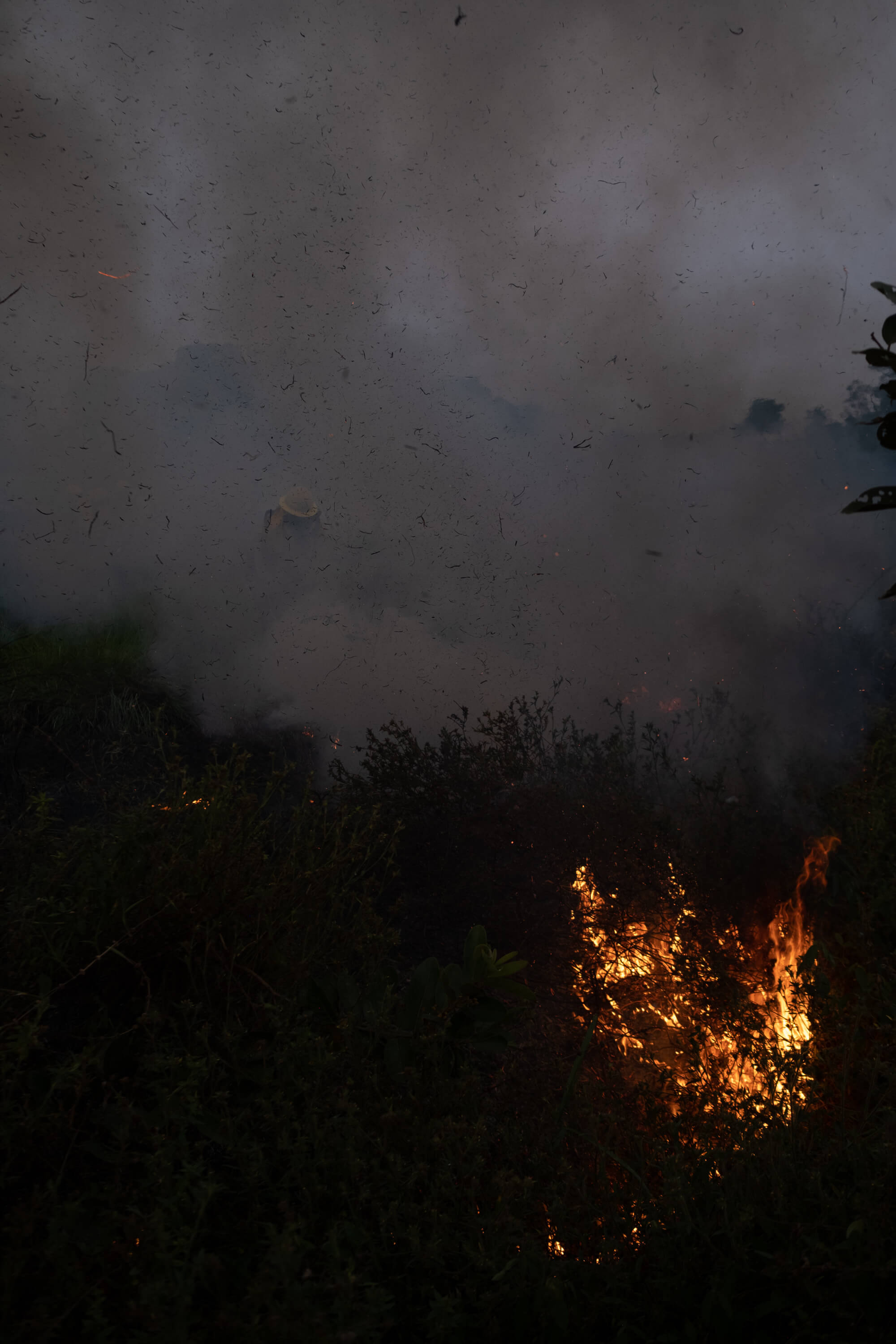
2.
In 2024, the Calamar Fire Station celebrated its 23rd anniversary, and it has never been moved from its site. It is located next to the Municipal Council, which is lies a few steps from the government building, which can be found next to the rectory and the parish. Unlike these three, built in cement and brick, the Station is a large house with panel walls and a roof made of metal sheets, a typical craft used to build the first houses in the town back in the 20th century.
—A large house —John reaffirms, with the seriousness of a complaint—. Yes sir, this is a large house.
It has three double-cab and flatbed trucks, two tanker trucks —one small and one huge— and a boat with a metal hull equipped with two powerful outboard motors. The firefighters gave these vehicles intimate names because they all star in some anecdote. The most striking one is surely “the Guerrilla FIghter.” That is what they call the first truck that the Station received. A carmine red Hilux. It was the end of the nineties, and the First Front of the FARC was the highest authority the town. One morning, a structural fire broke out and quickly left several buildings in ashes. The firefighters had only a hose connected to a motor pump that extracted water from the Unilla River. After the fire got the better of them, the First Front guerrillas came to help. In that Hilux, which they had stolen from some private individuals, they brought water, tools and provisions. Several hours later, when the fire was under control, the commander in charge handed the keys to the truck to the fire commander, saying: “Here, so you can help yourselves.” For several years that Hilux was the only vehicle with which they quickly responded to emergencies. Now, and for some time now, John and his group keep it clean, parked and under cover next to the entrance of the Station. The oldest firefighters are fond of it. Margarita Marín, with more than twenty years of service and wife of Muñeca —another of the most veteran firefighters—, tells me that she misses it and that it hurts to see it unused, almost as decoration.
—It was a lot of fire that we put out with the help of that truck. A lot. We should be able to repair it and use it again.
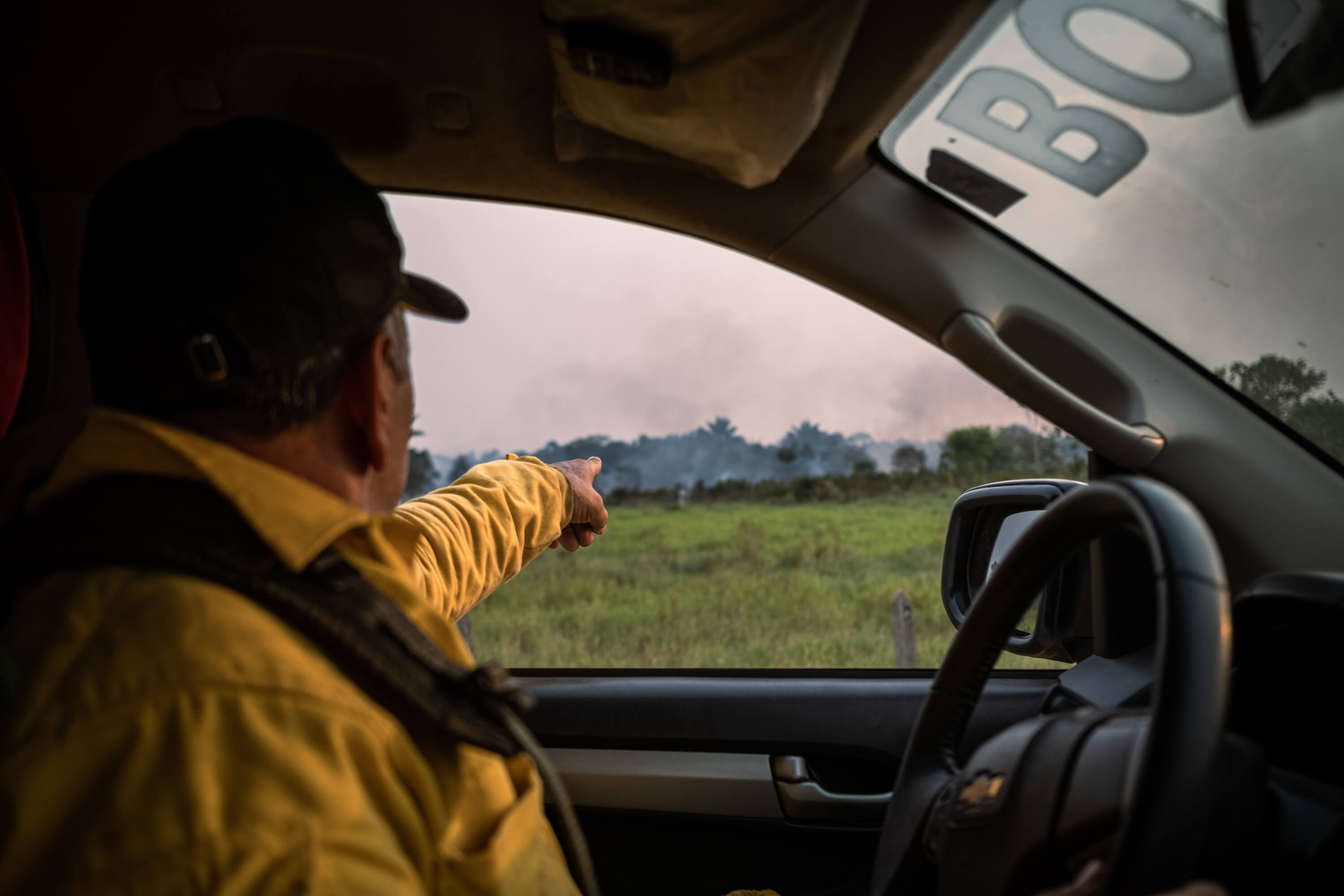
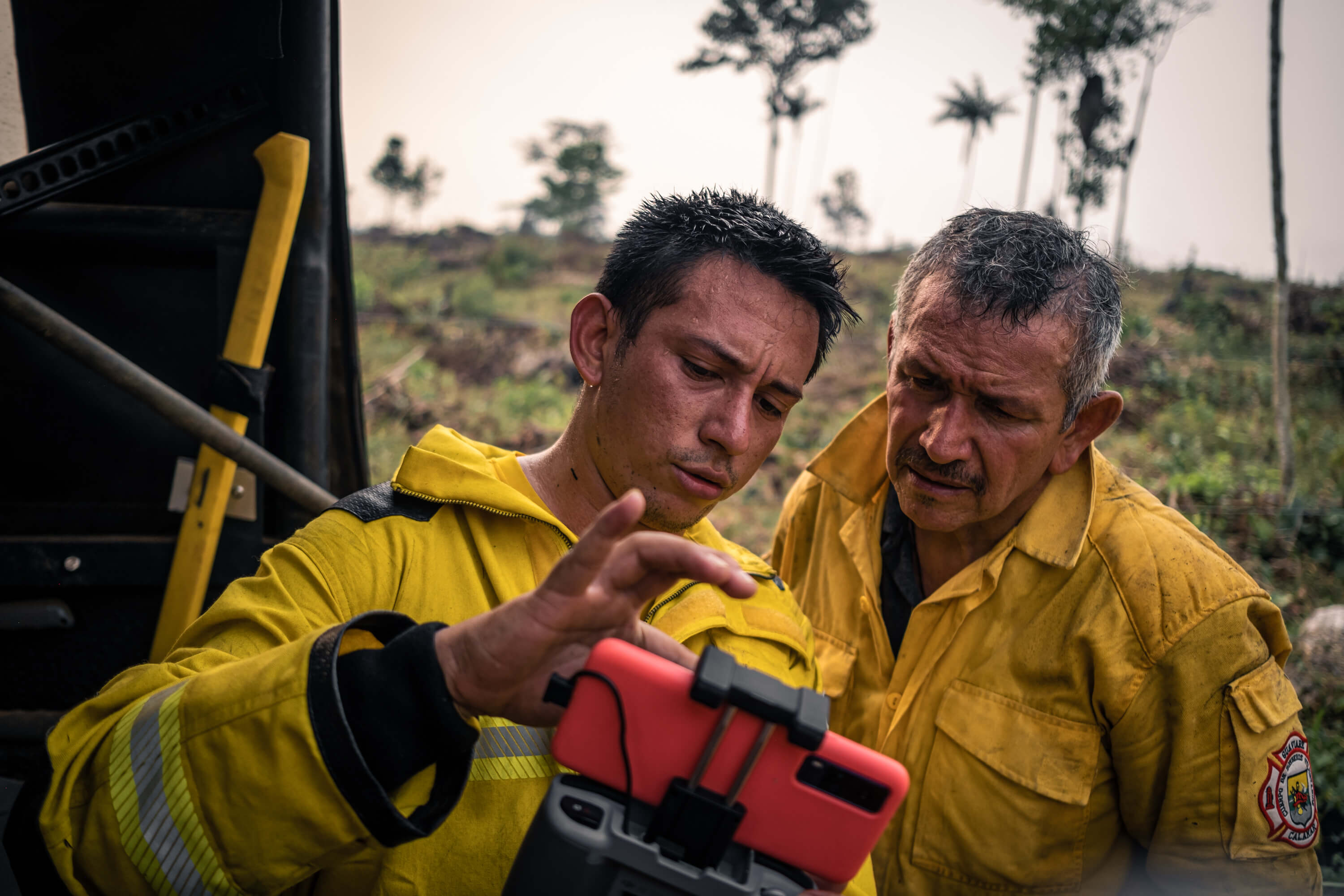
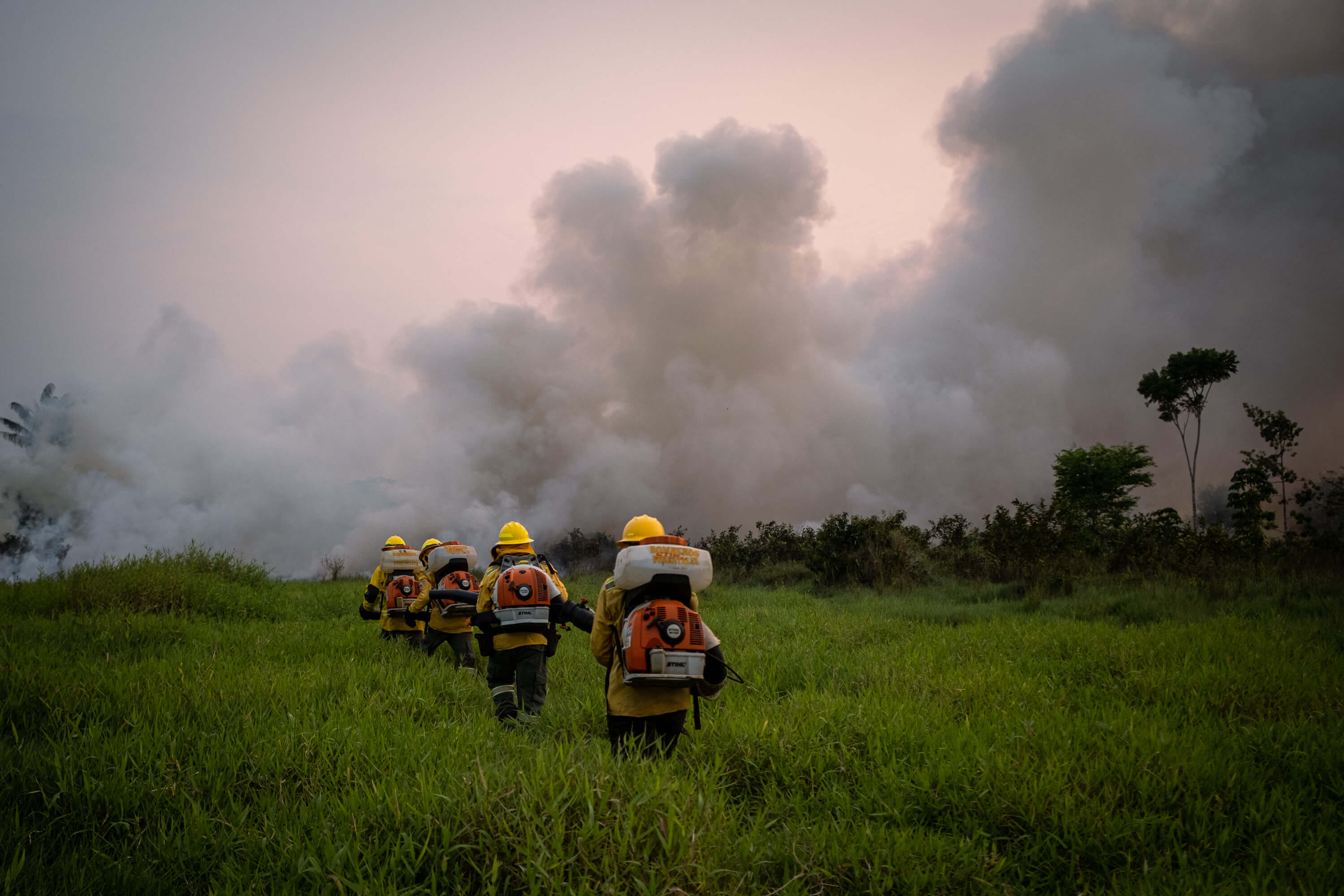
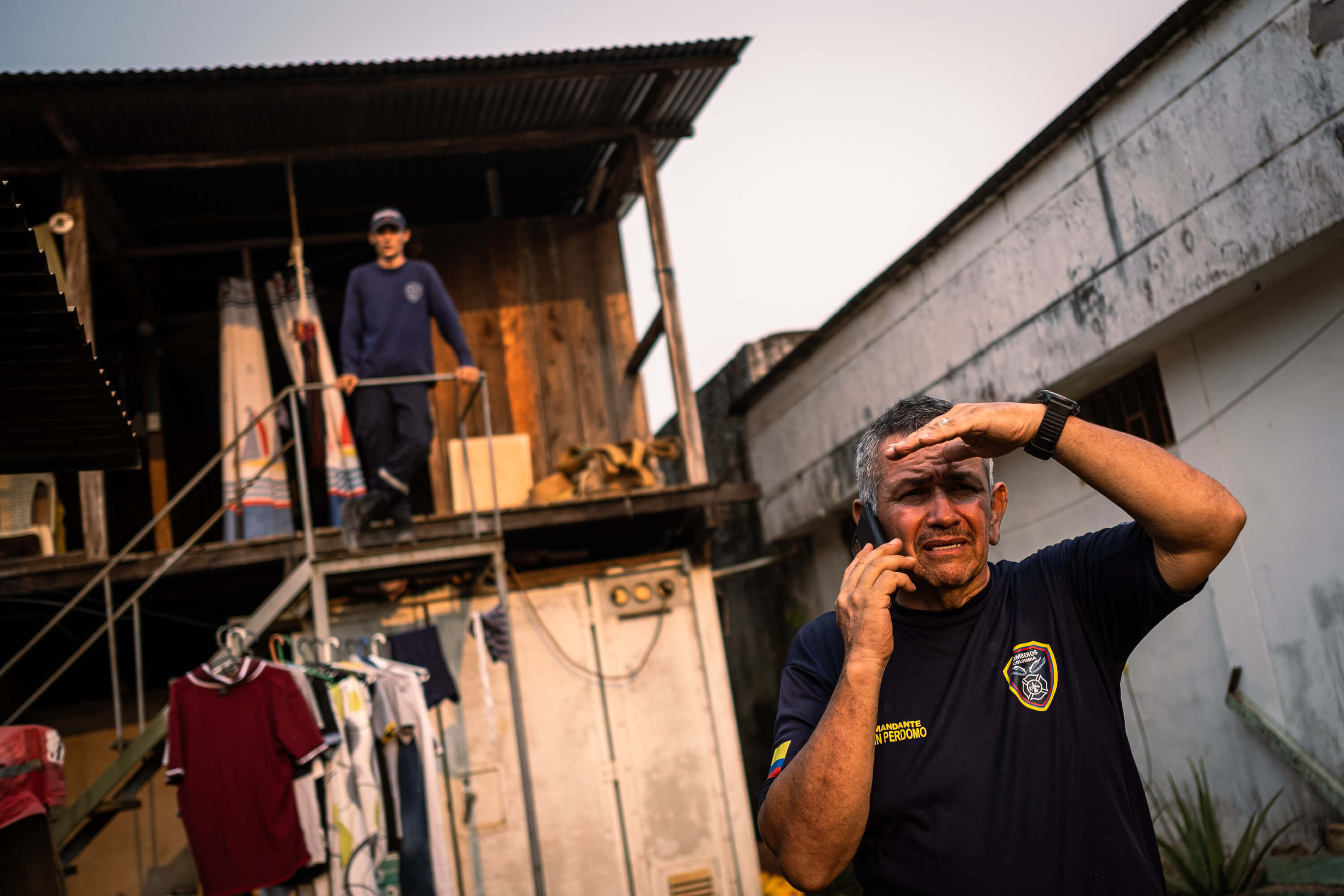




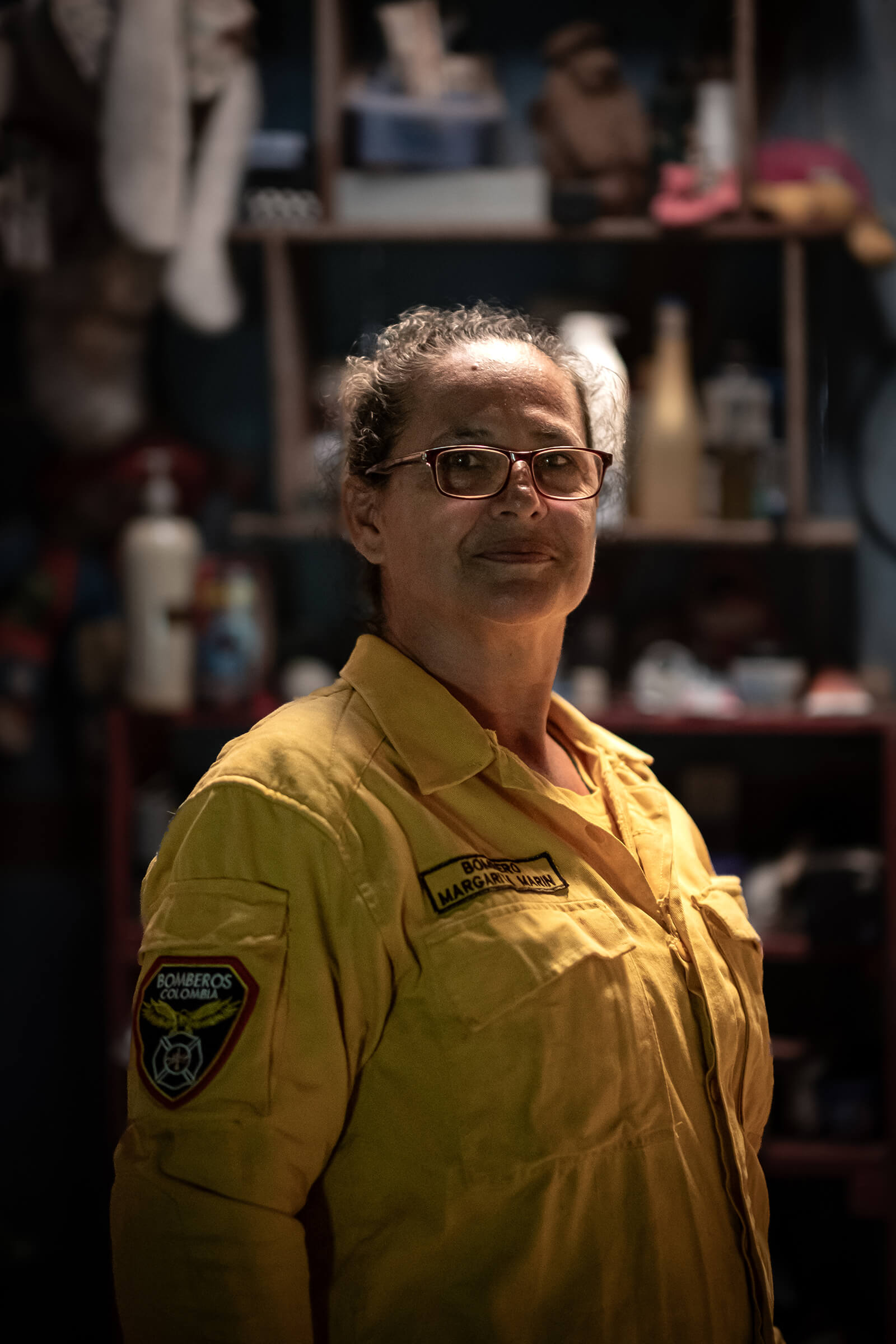
Firefighter volunteer
3.
In Calamar, as in all of Colombia, there are two periods of dominant weather. One of sun and little rain, between the months of January to March and July to September, which dries out the roads, reduces the flow of the rivers and encourages forest fires. And the other, between April and June and then between October and December, which is of water runoff from the downpours, and which brings floods and landslides, extinguishing the sparks that unleash the fires.
As already seems evident, climate change has altered these periods, making them longer or more intense or both at the same time. According to measurements by Global Forest Watch, 2019 presented 55 forest fire alerts in Calamar, the highest number recorded in the last decade. In 2012, as a reference, there were less than half. And so far this year, up to September 22, there have been 51.
To get to Calamar, you must travel two hours from San José, the capital of Guaviare, on a half-paved road, half a red dirt track, heading southeast. Before that, you come to El Retorno, a smaller municipality that started as a stop on the road and is now a busy commercial center. If you calculate using Bogotá as a reference, you have to say that the route includes three-quarters of an hour by plane or about ten hours by land to get to San José, with the compass pointing south.
Inhabited by about ten thousand inhabitants, this municipality grew on the right bank of the Unilla River. And in addition to being its main water source and river transport corridor to the interior of the Amazon jungle, today it is the border between the urban area and the cattle farms that extend to the south and that only stop in the jungles of the Itilla River reserve that are now the Chiribiquete river.
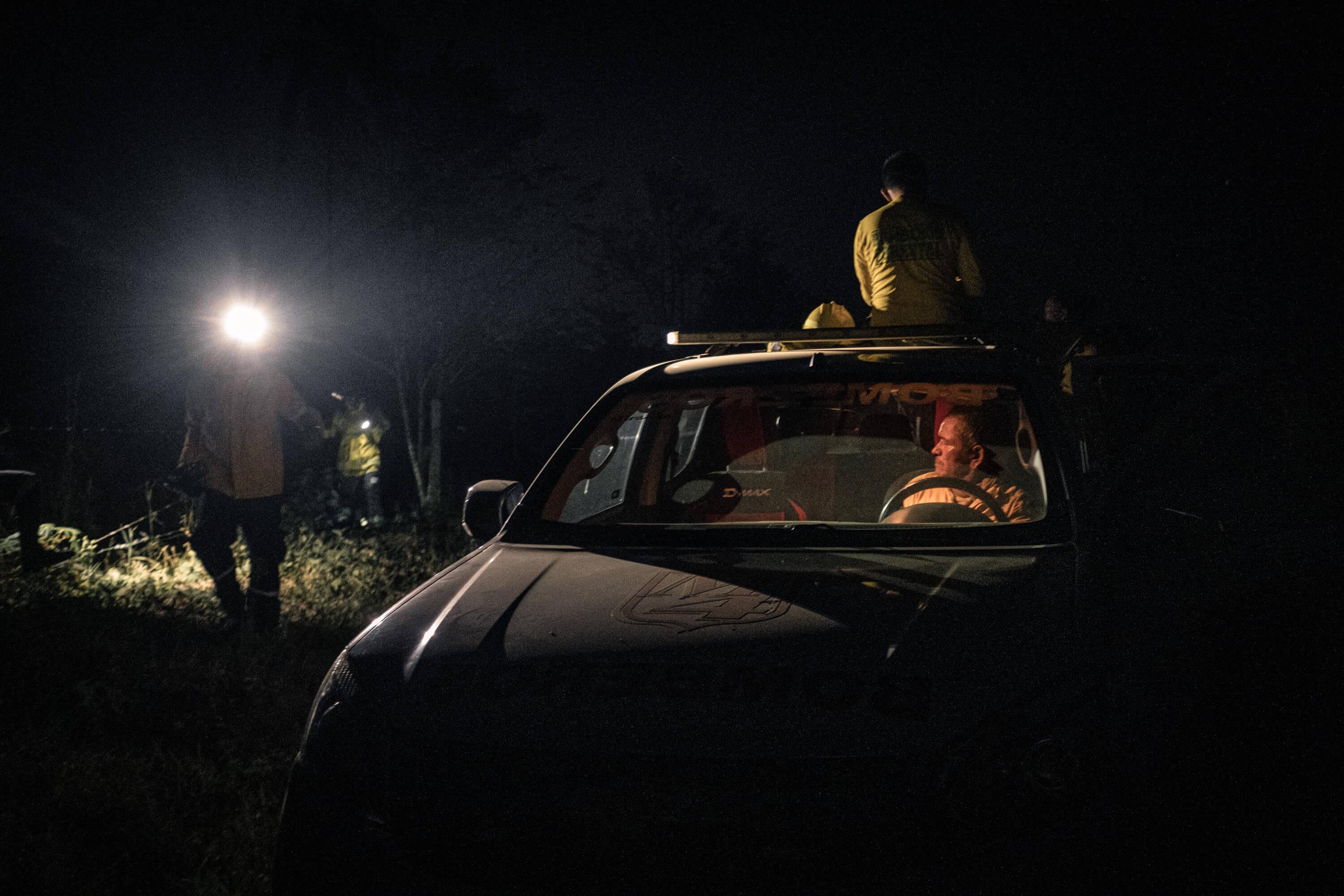
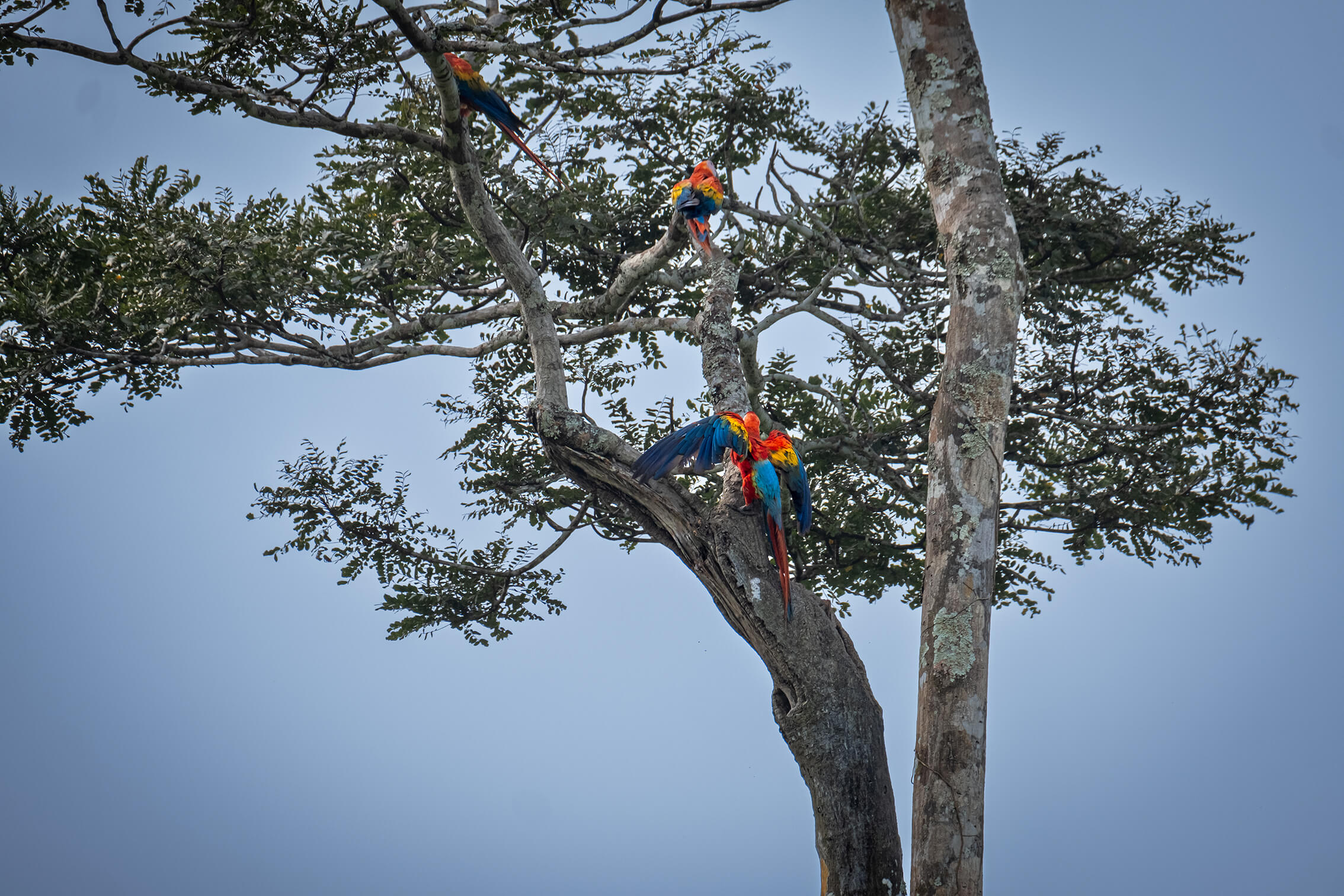
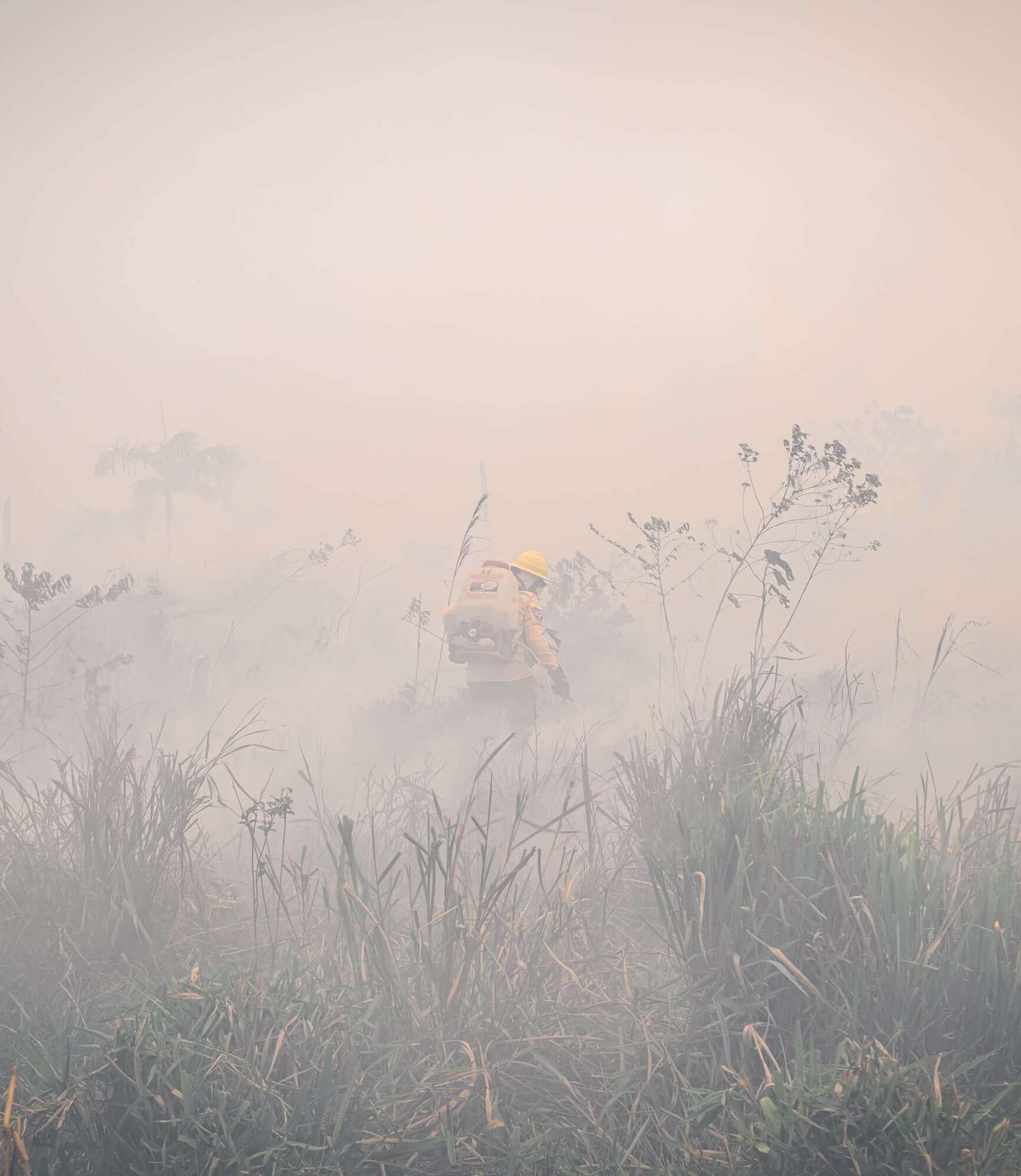
4.
When the fire siren sounds, no one in Calamar who is not from the Station moves a leg or raises an eyebrow. They already know that the emergency is somewhere else, not in the town centre. The siren has a long, slow cycle. Its tone is thicker, less sharp, than the usual ones from ambulances or the police. Let’s say that this siren is like a patient warning that says: «there is something to attend to, we are waiting for you», and not a desperate noise that demands «get here or everything goes to hell».
It is nine in the morning, and I see myself striding across the main park. The siren occupies the centre of the town. Muñeca is relaxed on his bicycle, sees me and says that they are waiting for me to leave. That I should hurry. There is a fire in a pasture located about 25 minutes from the municipal capital. We leave in two vans. We are three reporters together with a dozen firefighters.
When we arrive, we understand the emergency: it is a controllable fire, not so voracious, although it has already spread over some plots that can measure about ten hectares. The most astute firefighters are young people between 25 and 35 years old. Without giving any further explanation, they jump out of the truck, hang the fire-fighting machines they call “Martians” on their backs and go into the pasture. The fire is no taller than a person and is dying from the jets of air that the Martians shoot out. I advance cautiously following the steps of the firefighters. Yesterday, among the instructions they gave us to go out into the field there was one that I learned as a rule for life: in a forest fire the safest place is the one that is already burned, because the fire has already passed through there, exhausting what it needed to burn. So, I go looking for the consumed areas to run to the nearest one in case the fire takes on an unexpected second life and comes upon us.
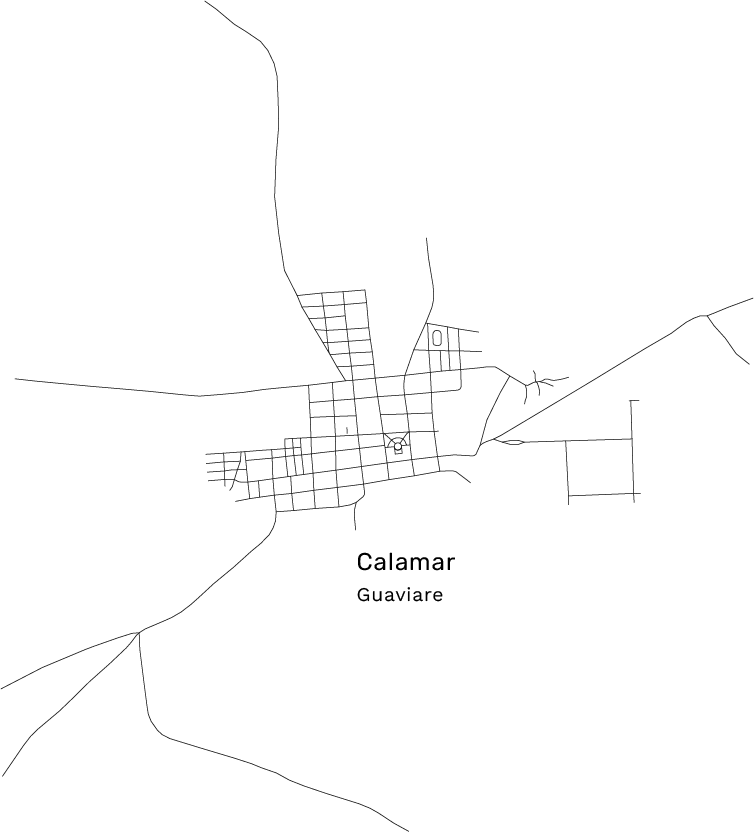
There is no such thing. What abounds on these ash soils are charred animals. Insects, above all. Beetles and centipedes. The occasional nest of birds and toads and snakes.
“They slashed and burned,” John explains to me. “But it got out of hand and the fire was spreading to the neighboring pastures.”
Slashed and burned means that the settlers of these lands, aspiring ranchers, cut down the forest with an axe and chainsaw and then set it on fire. A typical method in this region to convert a hectare of jungle into a hectare of fattening pasture.
A long hour later, the firemen have already put out each fire outbreak. And several columns of blue-gray smoke rise and gather in the sky until they form a dense and odorous cloud. On the way back to the station, in the truck, we listen to rock ballads by Heart. John seems happy. —That singer is called Ann Wilson —he says and pauses while he follows the beat of the music with his hand on the steering wheel—. So, how was it?
In the answer I include two virtues: one, the firefighters are all young, therefore, fast and daring; and another, the coordination between the team is noticeable: they talk, hold hands and know how to take the right steps inside the fire.
—That is what is needed —says John—. Young people who are fast and follow instructions. There are fire departments with a lot of “chiefs” and few “indians”, and here what we need are “indians”, why so many “chiefs” giving orders? What we need are young people out there who work properly.
I take note of the answer, but I do not forget that about two hours ago, when we arrived at the scene of the emergency, one of the youngest female firefighters —a brunette with honey-colored eyes recently unpacked from school— jumped out of the truck ready to help put out the fire. But as soon as she went a few steps into the field, John scolded her, telling her that it wasn’t her place, that she should go back to the command post next to the trucks, that from there she should be attentive to what the team needed. The scolding, I must say, was very harsh, perhaps unnecessary. John himself was seen to be excessive or overreacting during the fire, trying to put out small pockets of fire with his footsteps, as if he were killing cockroaches.
(The next morning, Alex Guzman, the station’s deputy commander, will tell me that the group saw John behaving in an unusual manner, that it was surely because we were there with cameras, that he surely wanted to show more determination than the emergency warranted. That at night they spoke to him and asked him to calm down. John will admit to me that yes, sometimes he goes too far, but that he bows his head and accepts the criticism of the group. That accepting mistakes is also being a good commander.)
5.
John arrived in Guaviare in 1984, to Miraflores, to be exact, the southernmost municipality of the department that could only be accessed by air from the Villavicencio airport. Today there is a road —the most soulless dirt road in the region— that connects it to Calamar. Born and raised until adolescence in Bogotá, John made that trip following his brothers who had left the capital looking for their mother. But once John descended the airplane stairs until he set foot on the runway, he felt that he had arrived in what would be his definitive land.
—I began to transform my identity. I was no longer going to be a “rolo” (Bogotá denizen). I would be from Guaviare, which is like saying that one is from all of Colombia because all the regions have people here. You ask where they come from and they will tell you: Valle, Chocó, Santanderes, Bogotá, the Coffee Belt, Tolima, the Atlantic Coast, the Eastern Plains, everything.
It helped that not long afterward he fell in love with a Guahibo woman and found a good way to earn a living. Before leaving Bogotá, he and his brothers took a diving course that, once settled in Guaviare, allowed them to offer services that no one else dared to offer: searching for and rescuing belongings, bodies and boats in the Amazon rivers.
—Here we realized that we were good at water, that no one went down to the depths that we did. One time we reached 54 meters deep in the Guaviare River looking for a DC3 from the Transoriente company. The only crazy people who did that around here were us.
They gained some fame and began to be requested by institutions and private companies; not only in Guaviare but also in the departments of Vaupés and Amazonas. There was always someone who told them that they should join a rescue team. “They don’t pay for that,” John answered. “It doesn’t matter,” they insisted, “you are good, you should be there.” Then, the security forces and the anti-narcotics forces offered them a paid and dignified place. They also refused, this time so as not to make enemies. In the first half of the nineties, the FARC reigned over Calamar, with all the rules of coexistence and war justice imposed. If the divers had joined the public force, they would have become a military target of that guerrilla group.
—We already understood that independent was better: we earned less, but we moved without risk.
They took the step of professional growth on their own not long after. The three brothers, Nelson, John and Muñeca, whose name is Carlos, put together savings and borrowed the remaining money to buy a couple of boats with which to create a company in which they could combine diving and transport. They named it Transportes Fluviales Hermanos Perdomo.
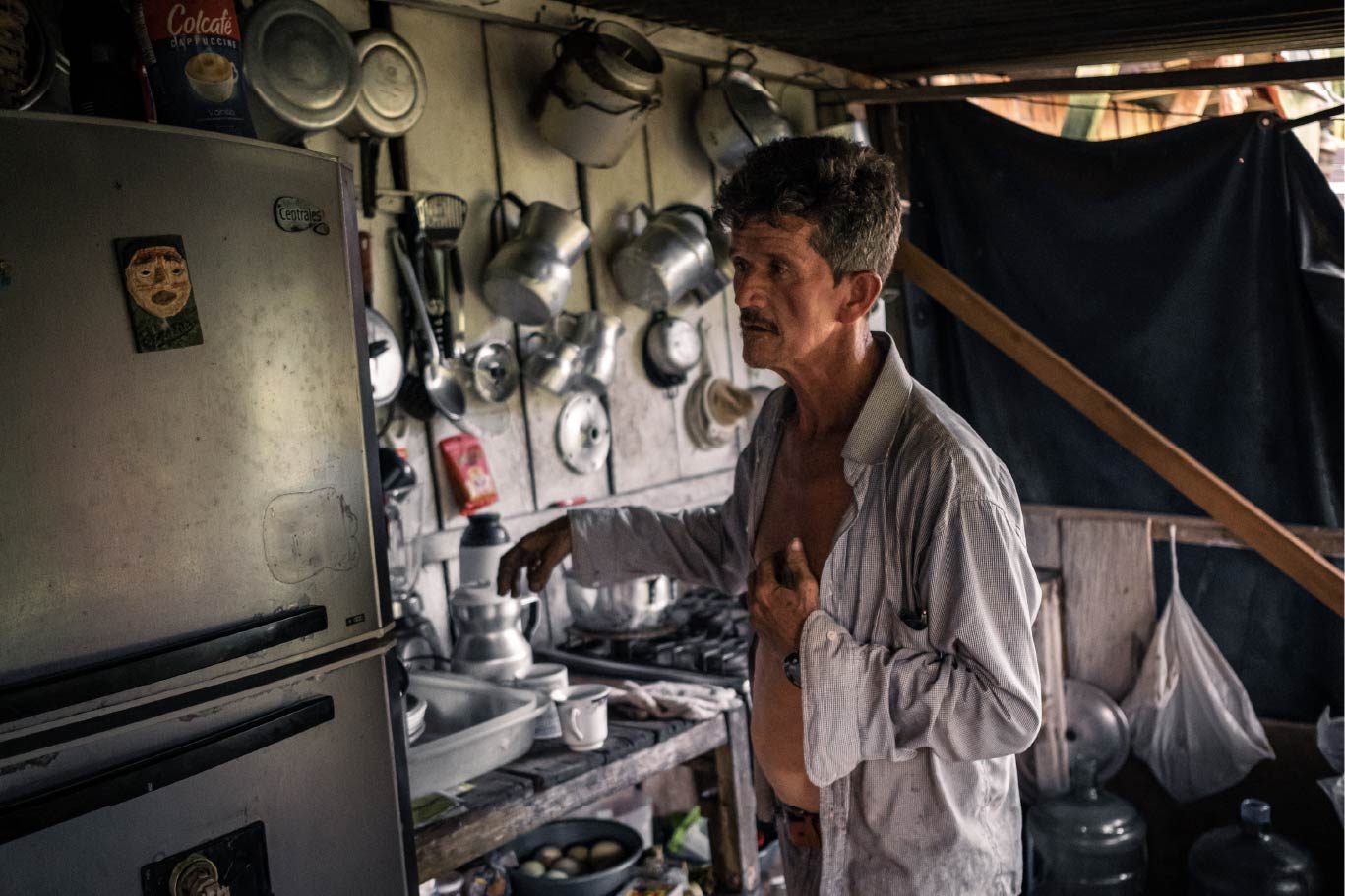
MUŃECA
Carlos Perdomo
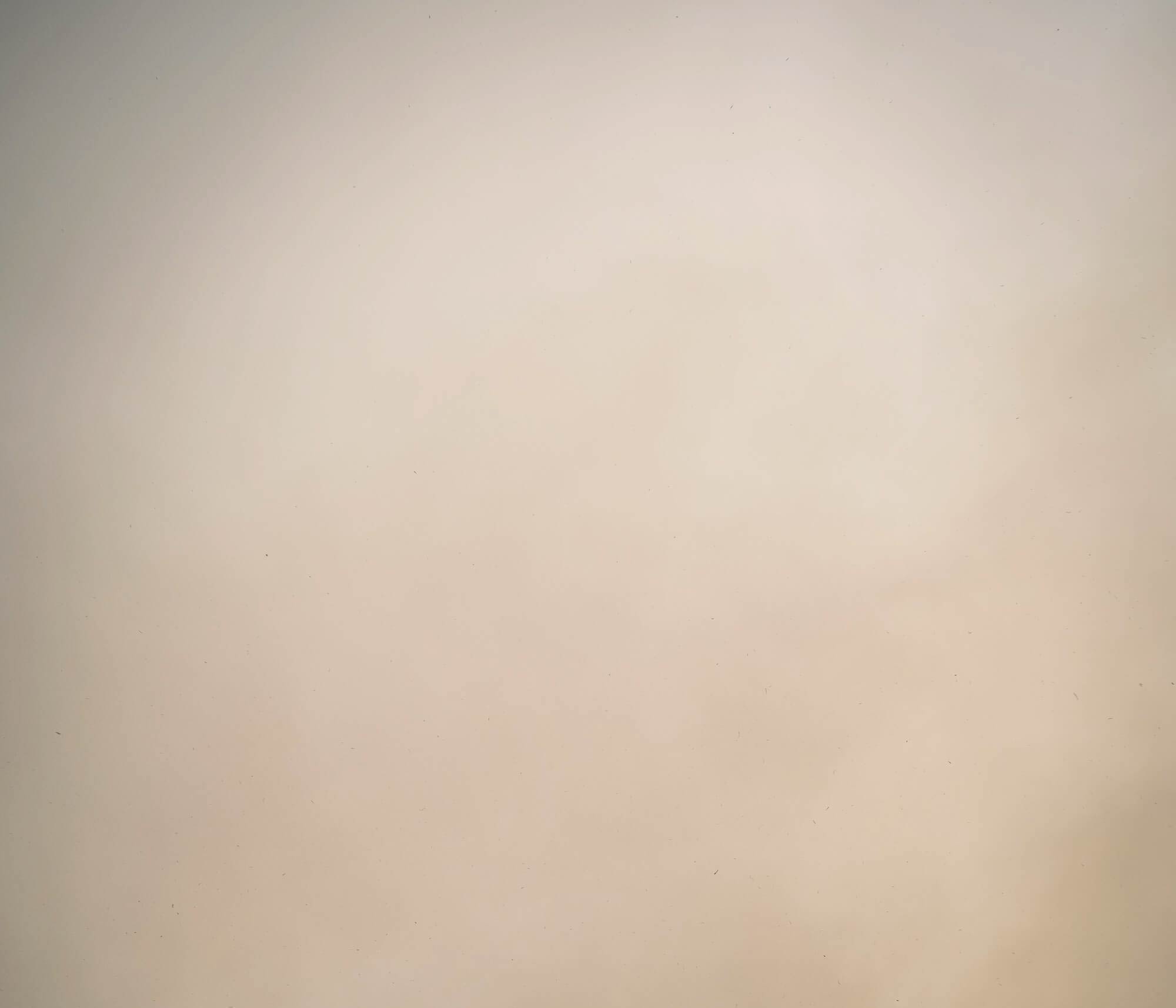
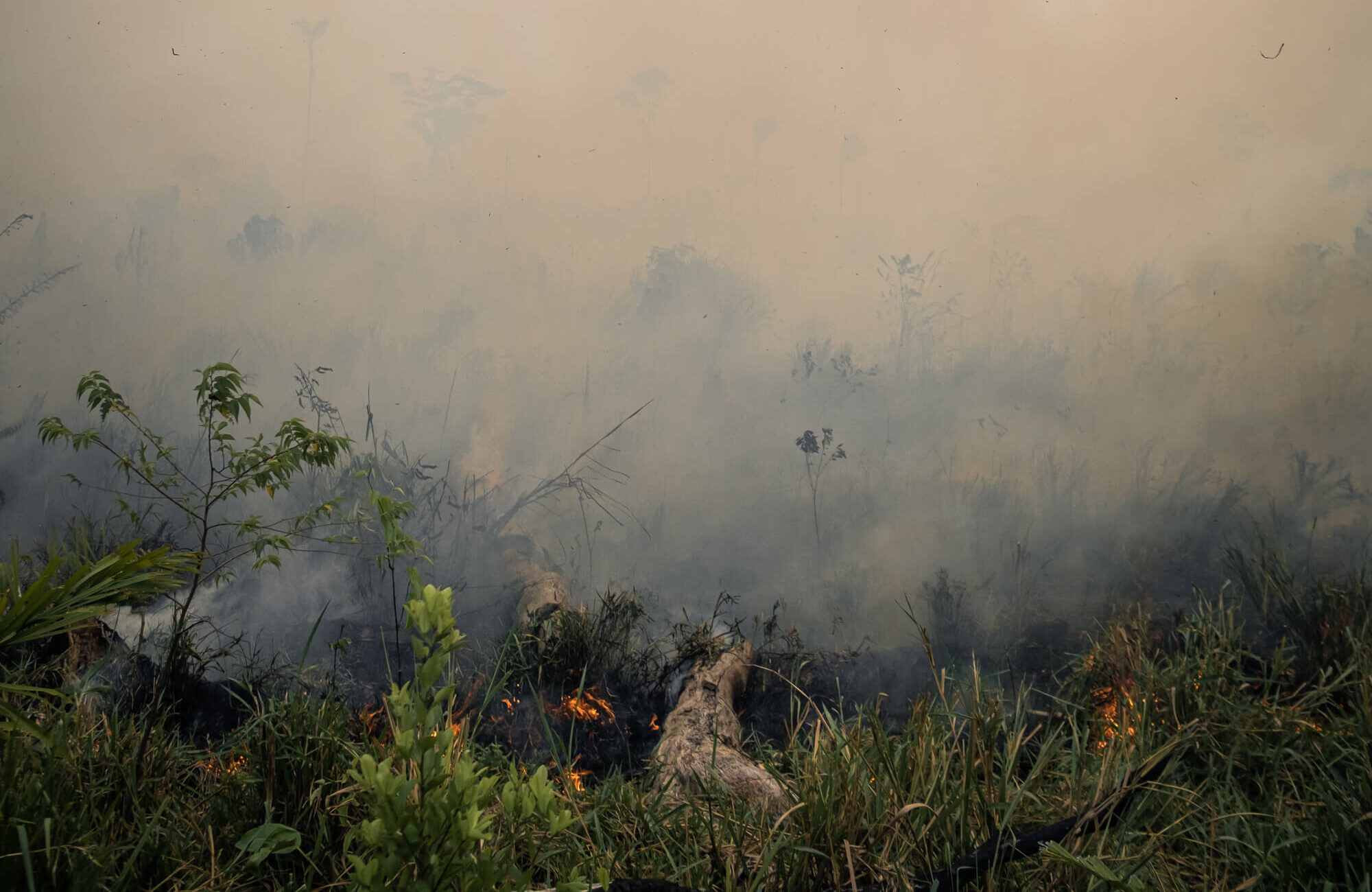
One morning in 1998, the exact date of which John does not remember, the Calamar firemen came knocking on their door. A kilometer outside the town on the Unilla River, a family had been murdered, the bodies thrown into the water and the boat they were on sunk, but not before stealing their money. The firemen, who from the beginning had the mission of recovering the bodies of people who died in public areas, asked the three brothers to help them remove the bodies. And it had to be a favor, they insisted, because there was no money to pay them for the service. The Perdomo brothers entered the river, rescued the bodies and brought the boat afloat. Seeing the Perdomo brothers’ abilities in front of them, the captain told them to join the fire department, that they would be of great use to the town. The Perdomos again said no. And in the following days, every time the captain met one of the three brothers on the street, he repeated the invitation. The answer that any of the three gave him was the same as always: they didn’t want to because there was no salary.
—I would pass by the station and look inside and although I wasn’t convinced, the idea started to get me —says John—. Until one day I told my brothers that we should go in and see what would happen. And they agreed. From that moment on we went out to recover bodies, boat engines, whatever fell into the water, but no longer independently but as Calamar firefighters.
—And the idea got to you just because? What did they offer you in return?
—They didn’t offer me anything because the Station had nothing to offer. The only thing they told me was that I was entering with a rank and not as a private, because I had studied the law that governs fire departments. Otherwise, we entered because we wanted to see what it was like and how we could help.
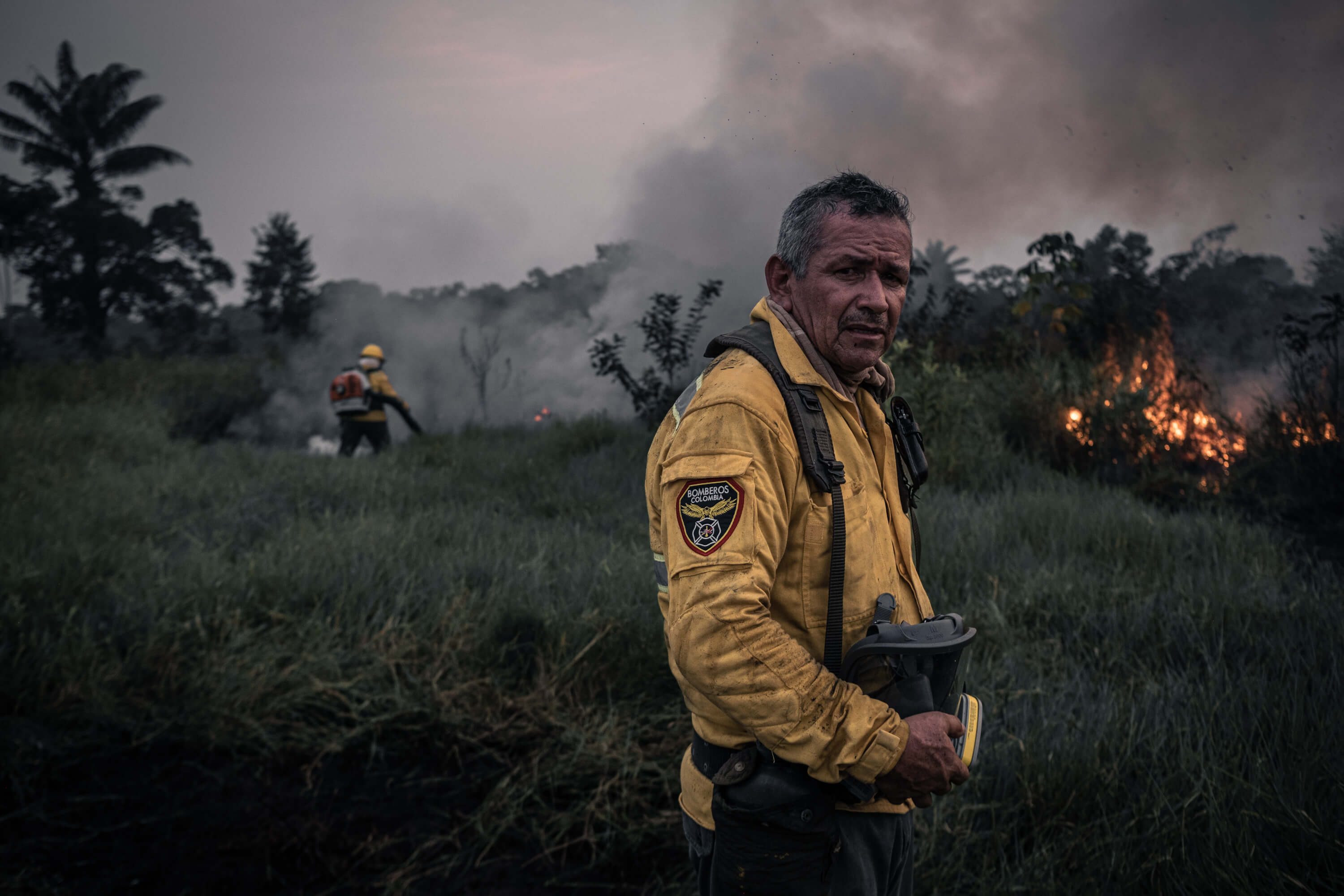
JOHN PERDOMO BARÓN
Station Commander
Calamar Firefighters
6.
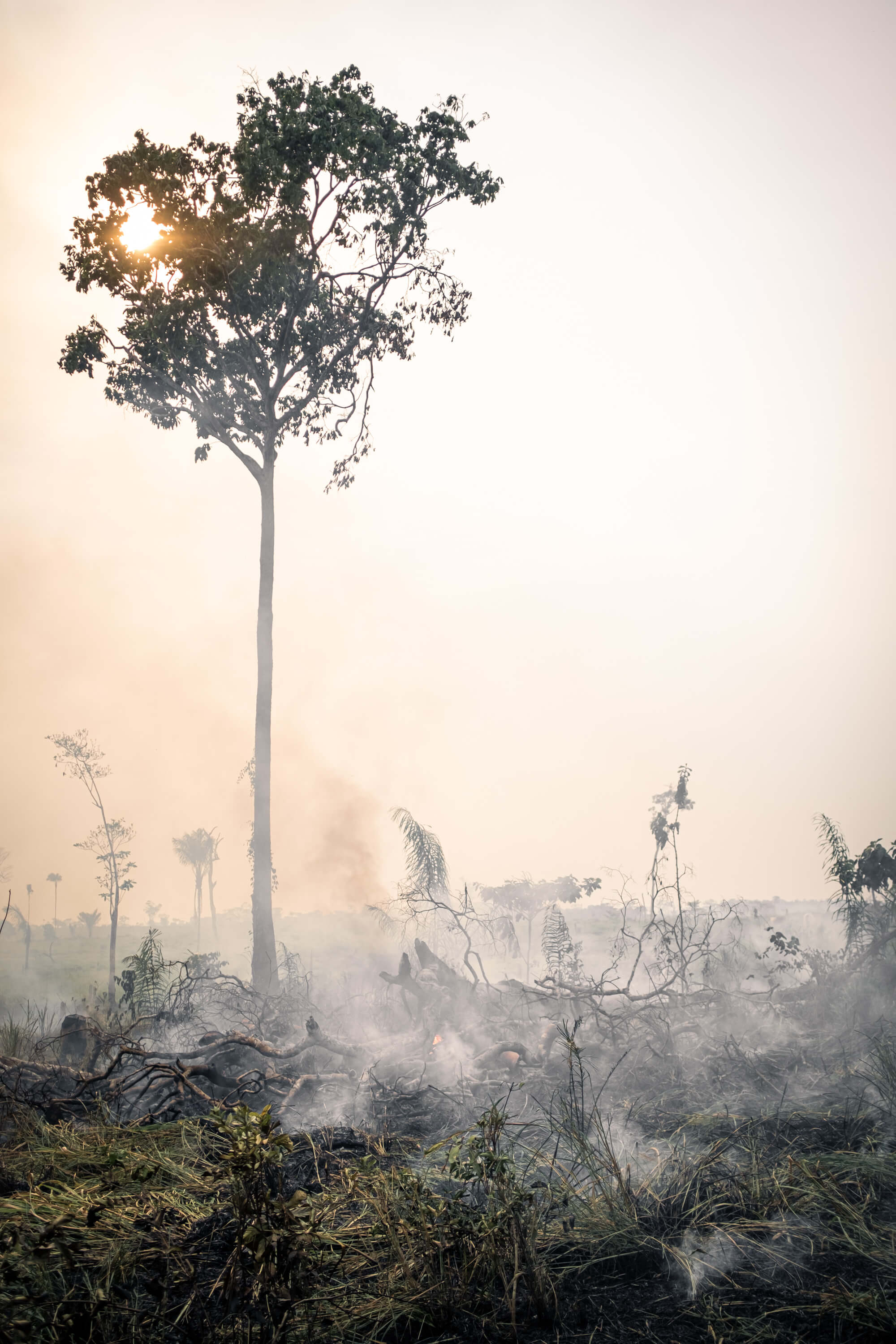
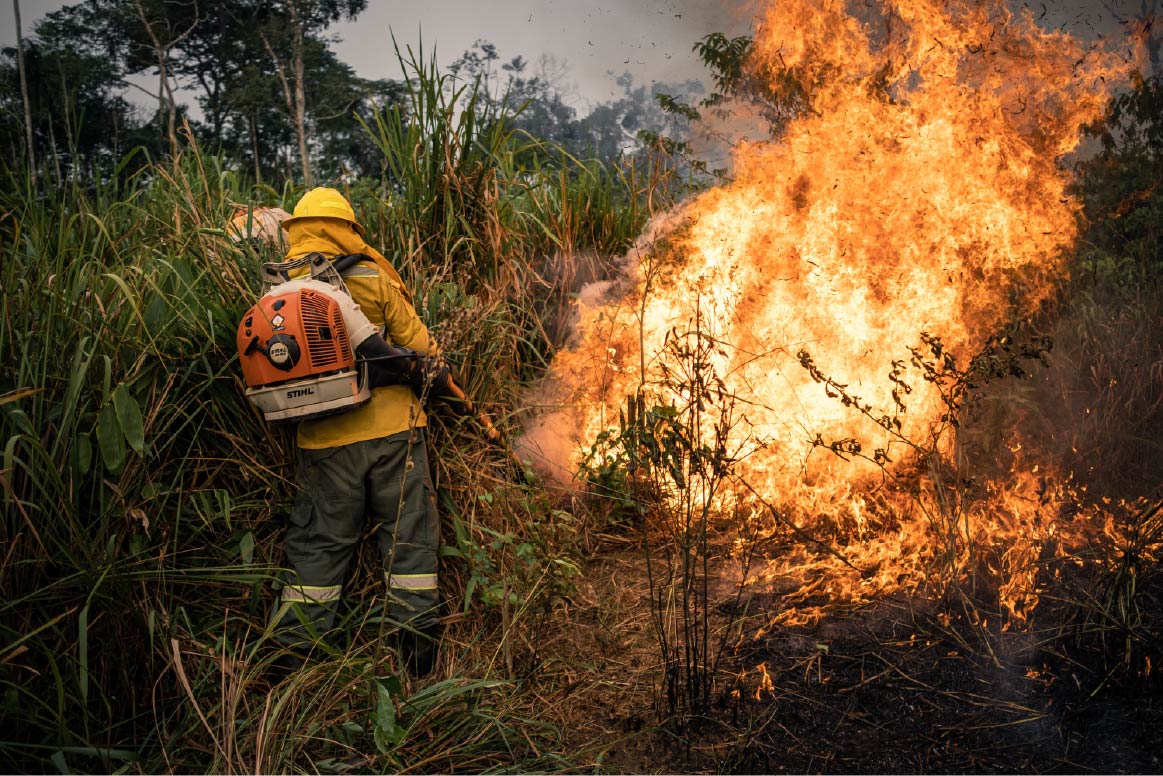
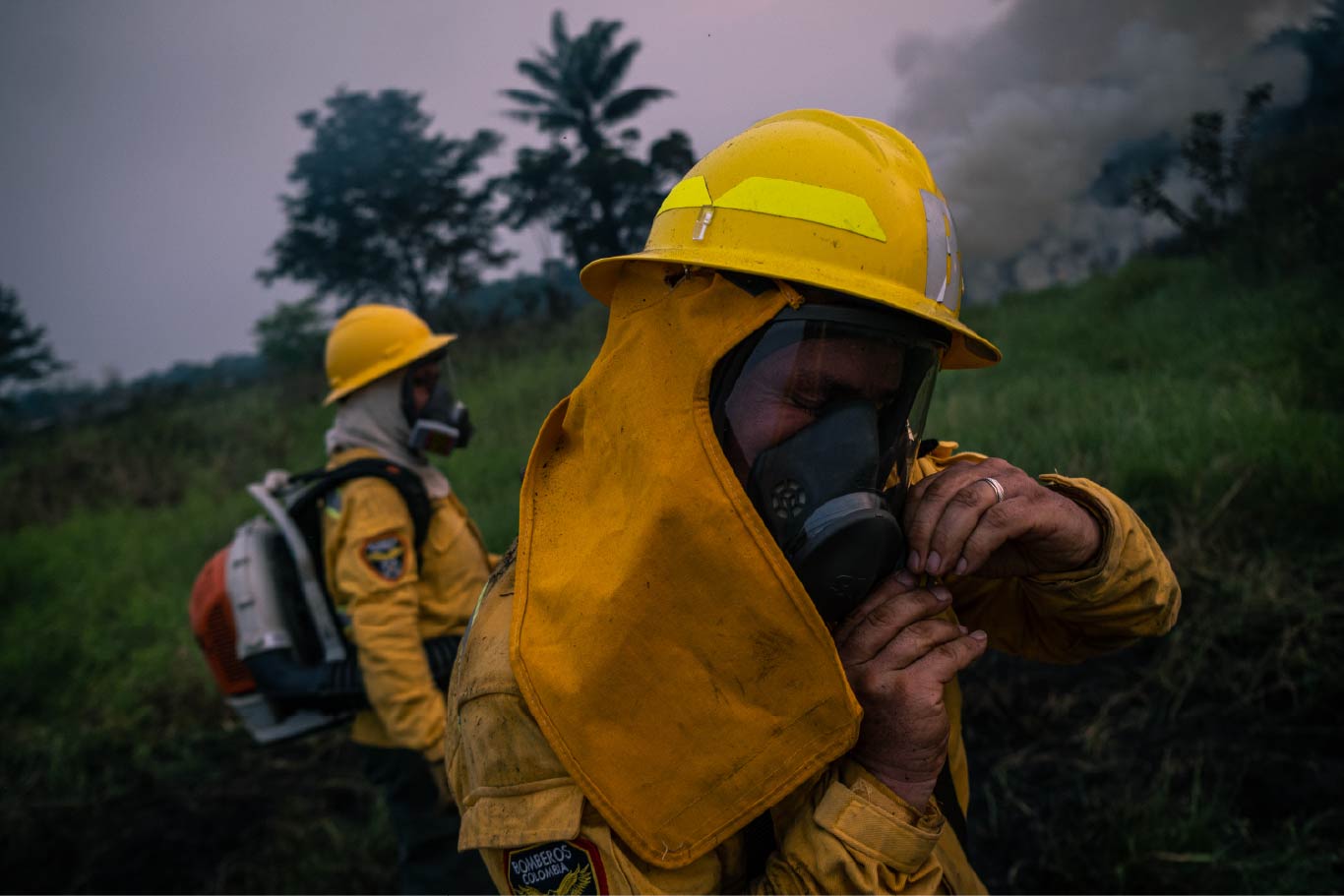
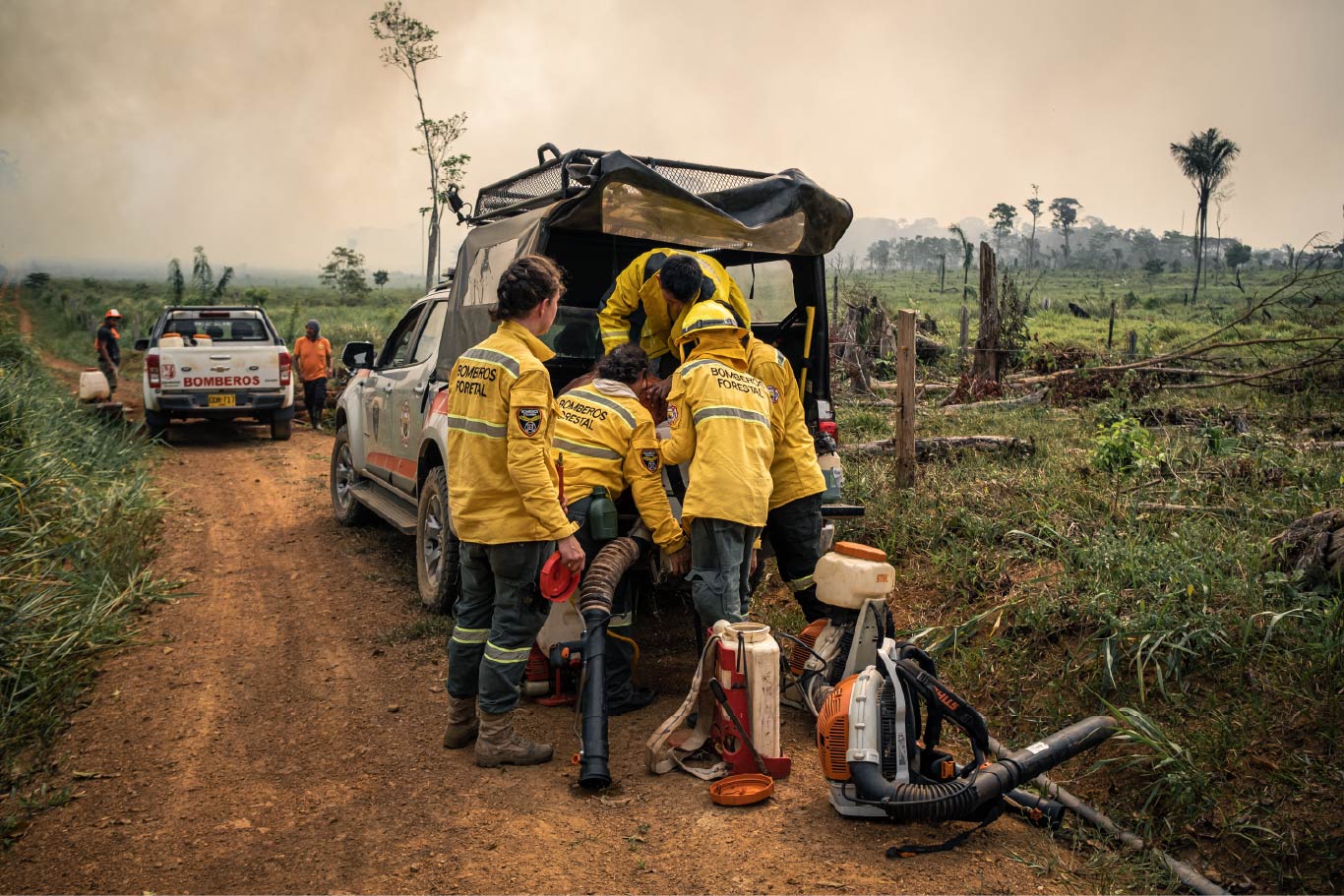




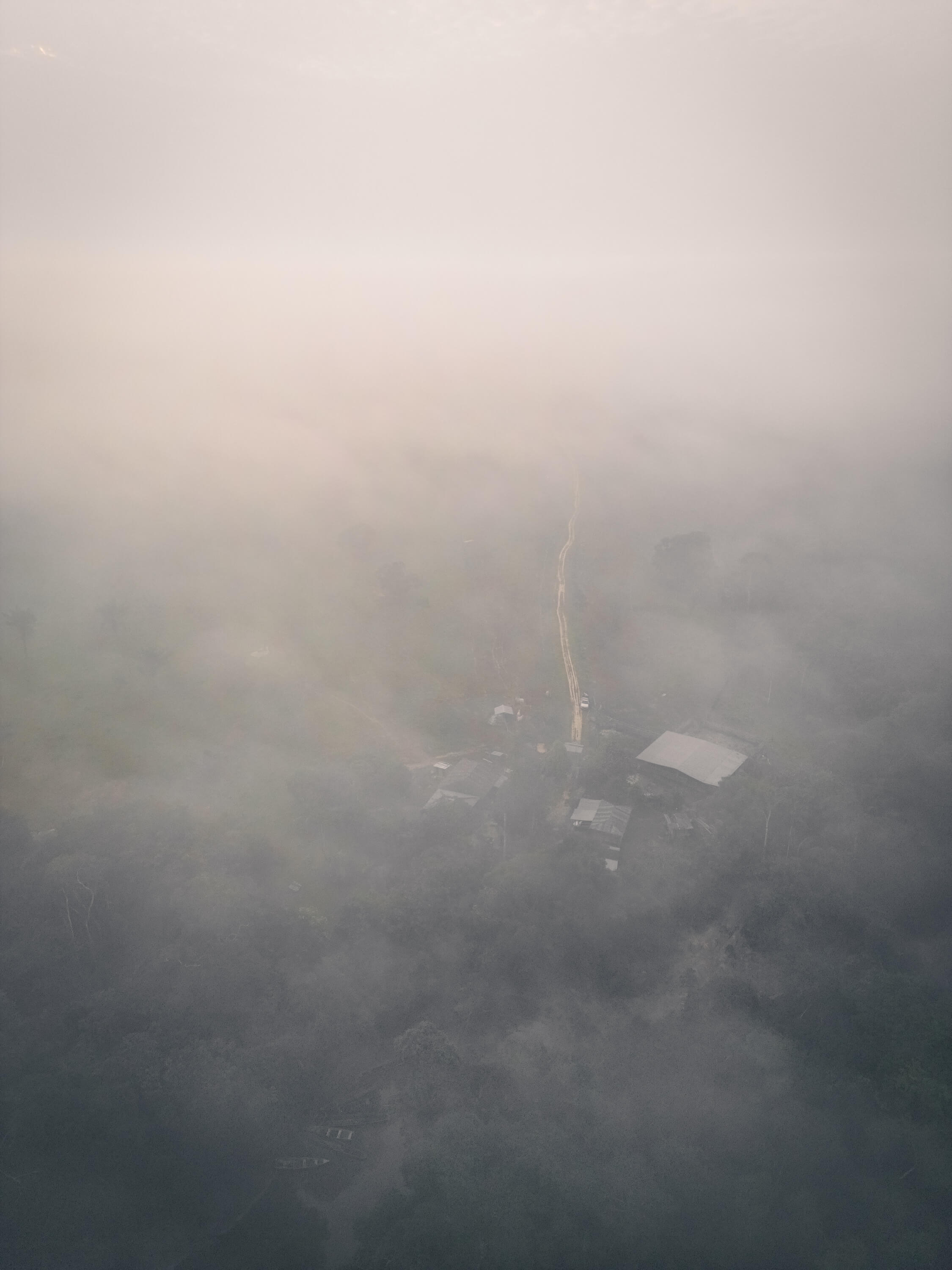
7.
The day came when the veteran firefighters were getting tired of the lack of job stability and the fact that the circumstances of their work were always adverse. John’s two brothers left. Nelson left completely. Muñeca, partially: he stopped being on constant alert to dedicate himself to jobs that gave him a little more money. And he only joined the group when there was a fire that had to be attended to with all possible personnel.
The Station was not left alone, in any case. The local Government had already decided that high school students who had to complete their hours of social work could do so as firefighter collaborators. And several, after obtaining the requirement, stayed a while longer, like the current mayor of Calamar, Farid Castaño García. Or indefinitely, like Salvador Chitiva, who continues to respond to the sound of the siren and face fires with the courage and strength of the first time. John’s daughter, Anggy, did too. She arrived as a student and today continues in administrative and logistical activities within the Station. And when it’s her turn to help on the ground, she tightens her uniform and helmet and follows the most daring, waiting to shake their hands. John boasts that in Guaviare, the fire department with the most prepared personnel by seniority and experience is his, the one from Calamar.
—I have them registered and carded in the system. They have the seniority and training. The one who has been with us the shortest has been with us for four years. That makes one work with young, fresh, athletic and trained personnel. It doesn’t matter if they are rude. I go to sleep peacefully because I know that the boys know how to respond. They are equipped. The cars are up to date. And we don’t fight over stupid things.
The current group is 18 firefighters, men and women, and when the siren sounds, at least twelve of them respond. And it’s not a metaphor to say that they are family. Alex Guzman, the second in command, is Anggy’s husband. He joined the fire department in 2013, after arriving in the region as a professional soldier, a member of an army advance party that had to confront the First Front of the FARC. Today he is a man around 40 years old, trained like no one else in war medicine and survival techniques. During the rescue of the indigenous children who survived the crash of the plane, in October 2023, Alex was part of the search team. Of all the firefighters in Guaviare, he is the only one capable of overcoming the complexity of the deepest jungle and performing emergency first aid with few medical elements available.
Margarita and Muñeca’s two children also make up the team. Angelo is a tall, strong young man, with long reddish-blond hair that he ties back with a bun, and he always looks full of energy and courage to face the fire on the ground. David simply dashes through office activities and has been instrumental in the administrative management of the fire department. Margarita, as I said, had a time when she went out to put out fires along with the others and today, she misses the Guerrilla Fighter. She has also been a leader defending the work of the Station at times when hatred and resentment have been directed at her. Margarita especially remembers a fire in the center of town that consumed seven commercial establishments and as many homes.
—We did everything we could possibly do to put it out —she told me.
For the community that effort was not enough, and they attacked the firefighters with insults and mistreatment. The cruelty of the population was so great that the local Government organized a session in the Municipal Council for the firefighters to explain what had happened. Wounded in her self-esteem, Margarita went to the lectern and said: “You attack us, you treat us so badly. You are very abusive with us. We are volunteers: if I want to go out, I go out, if I don’t want to I don’t go out. Nobody forces me. I do it because I like to collaborate. If what I do, what we firefighters do, causes you harm, I will give you everything and you can get out.” Margarita, as a final gesture, left her helmet on the central table as if she had put it down. The mayor, completely cornered, answered: “No, Margarita, don’t do that. I apologize.”
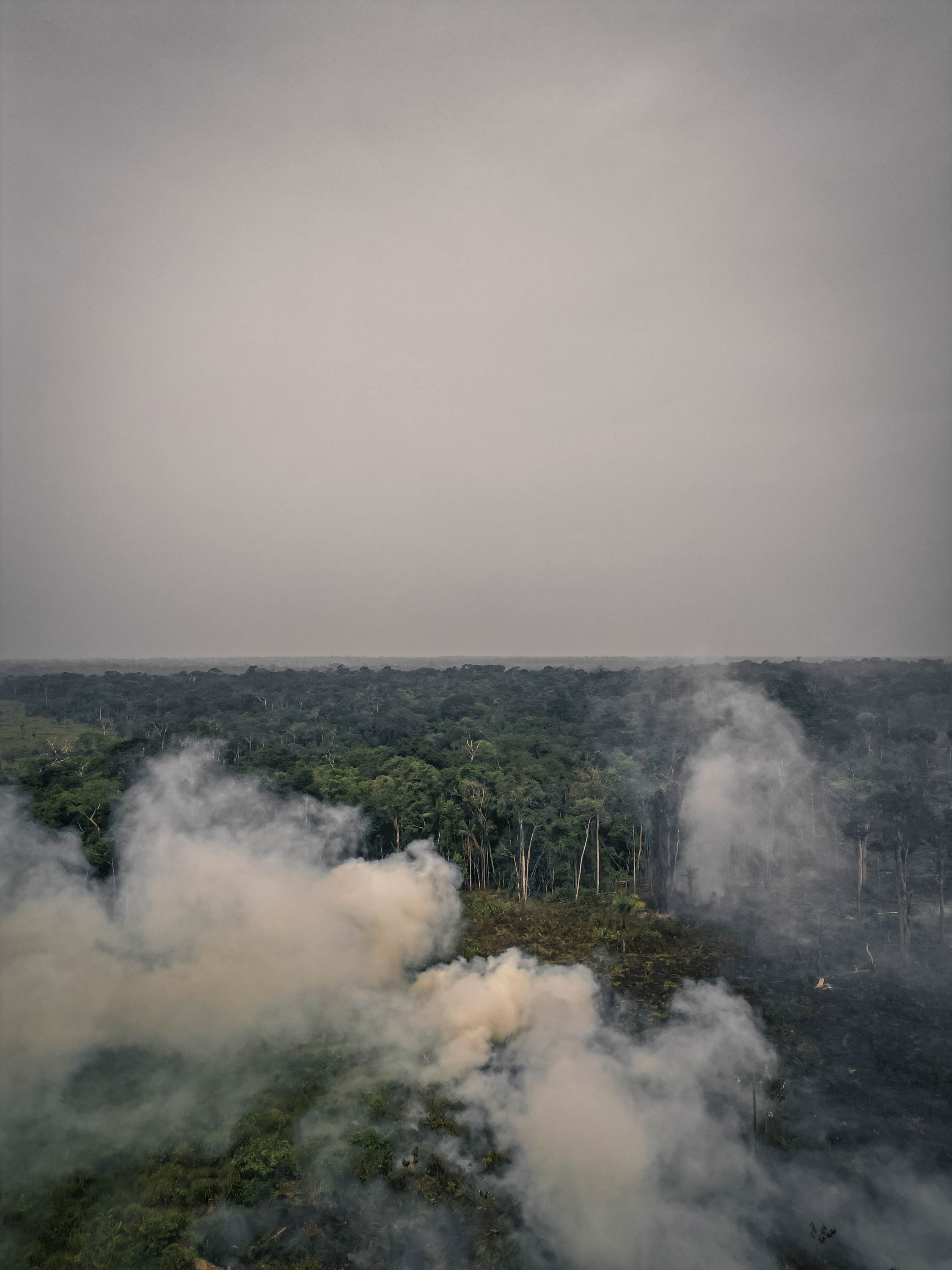
8.
Since 2010, the fires have been mostly forest fires. Margarita, John and Muñeca only mention three structural fires in the last twenty years: in addition to the one that was debated in the Municipal Council, there was another that left the former police headquarters in ashes and another that burned for several days in the central garbage dump. Otherwise, the calls for help have always been from the vast rural areas. This change, according to the firefighters and other people I spoke to in Calamar, was caused by the implementation of Plan Colombia or after its implementation. That is, between 1999 and 2002, because this package of economic and military aid received by the Colombian State from the United States government led to the change of the main economic activity in Guaviare: from coca leaves to cattle.
Since the first shacks and houses built in Calamar, at the dawn of the 20th century, this town was the outpost of the Colombian colonization of the Amazon rainforest. The forest of wide, shaggy trees that rose to more than thirty meters in height existed just a few meters from the walls of the last house. Towards the mid-eighties, when Margarita and the Perdomo brothers moved to Guaviare, the picture of the scene was still that of a dense, impregnable jungle, even though coca leaf cultivation had begun in the late seventies.
—I arrived in 1986, and everything was green, wherever I walked there was only jungle—says Margarita, sitting on some sun chairs located outside her house under the shade of an almond tree—. There were no paved streets, and the roads were a quagmire. Everyone wore rubber boots. It was the only thing that held up. There was no deforestation. But Plan Colombia brought about the transition. They told us: “Don’t plant more coca, Plan Colombia will help you with cattle.”
Cattle as a factor of change was a strategic decision of the Plan. During the first rounds of fumigation with glyphosate, which took place in the nineties — particularly intense between 1995 and 1996 — the offers of change of economic activity that the coca farmers received were other crops such as cocoa and palm hearts. But none of them left the profit margin that coca paste did. The few families that accepted state aid returned to coca leaves sooner rather than later because they missed the purchasing power that those profits allowed them. In exchange, they gave up peace of mind, they accepted that they would become judicial pieces of the drug trafficking chain. The final balance was always on the side of the coca leaf, no matter how harsh and aggressive the aerial spraying with glyphosate—and the rest of the anti-narcotics police operations—had been.
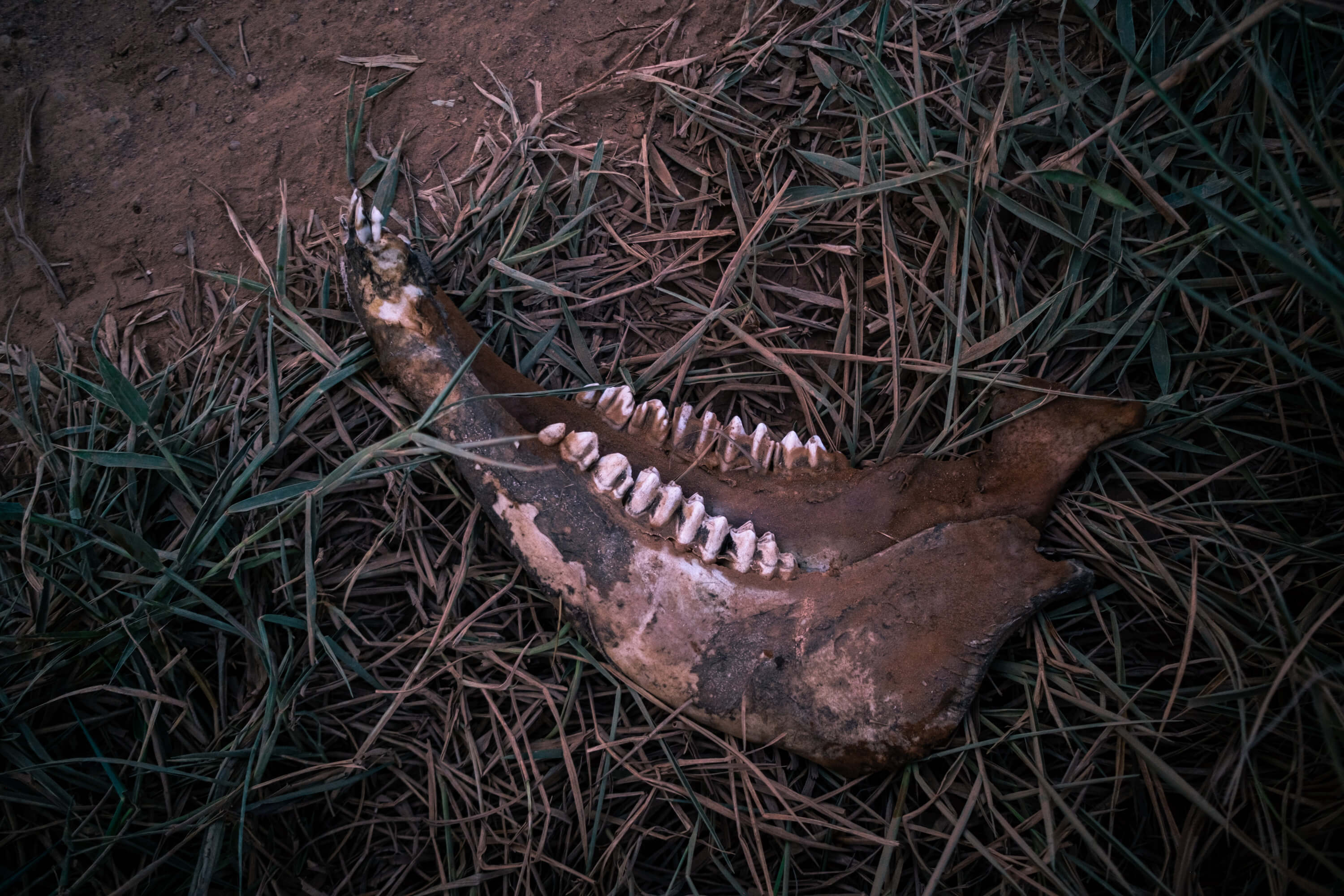
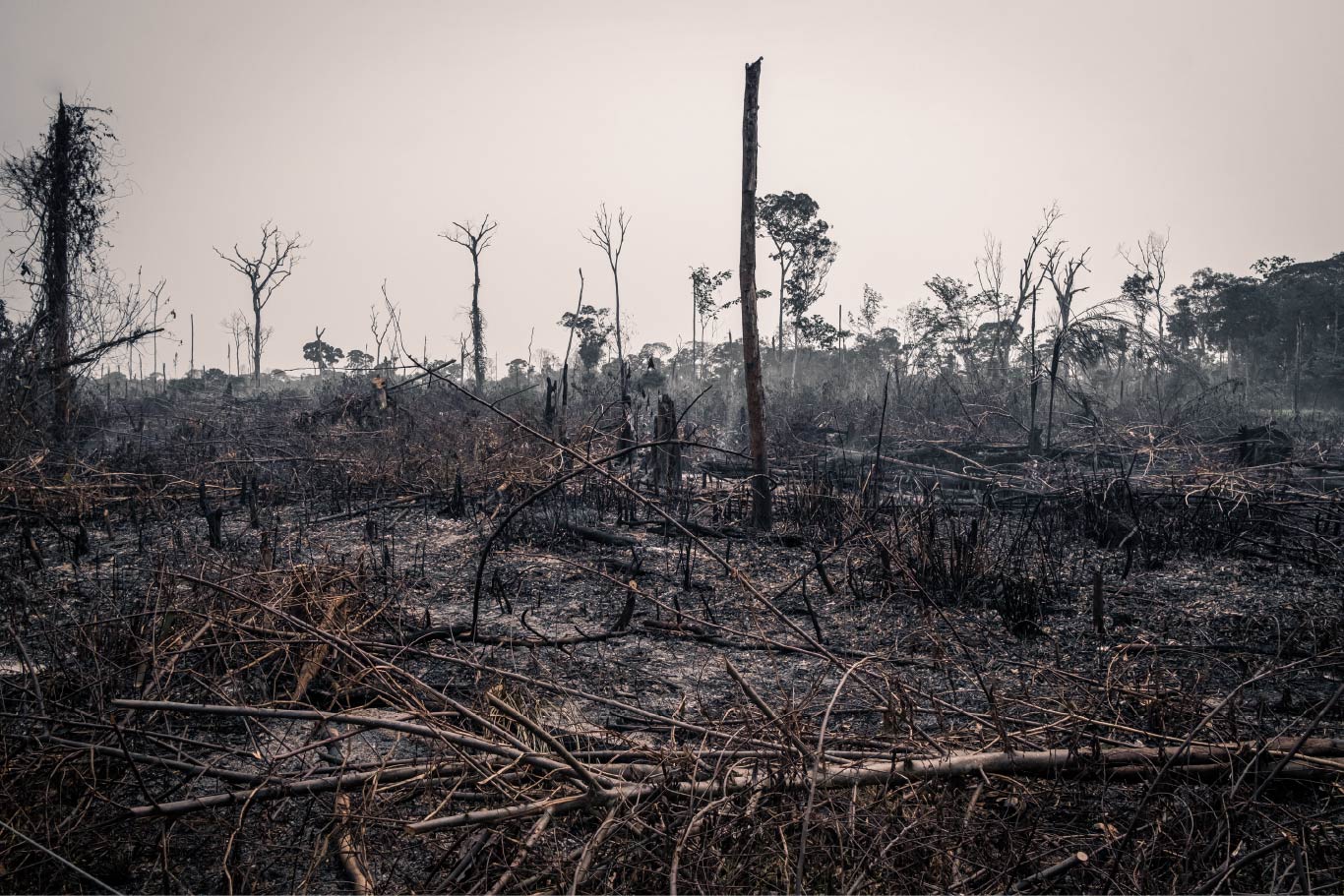
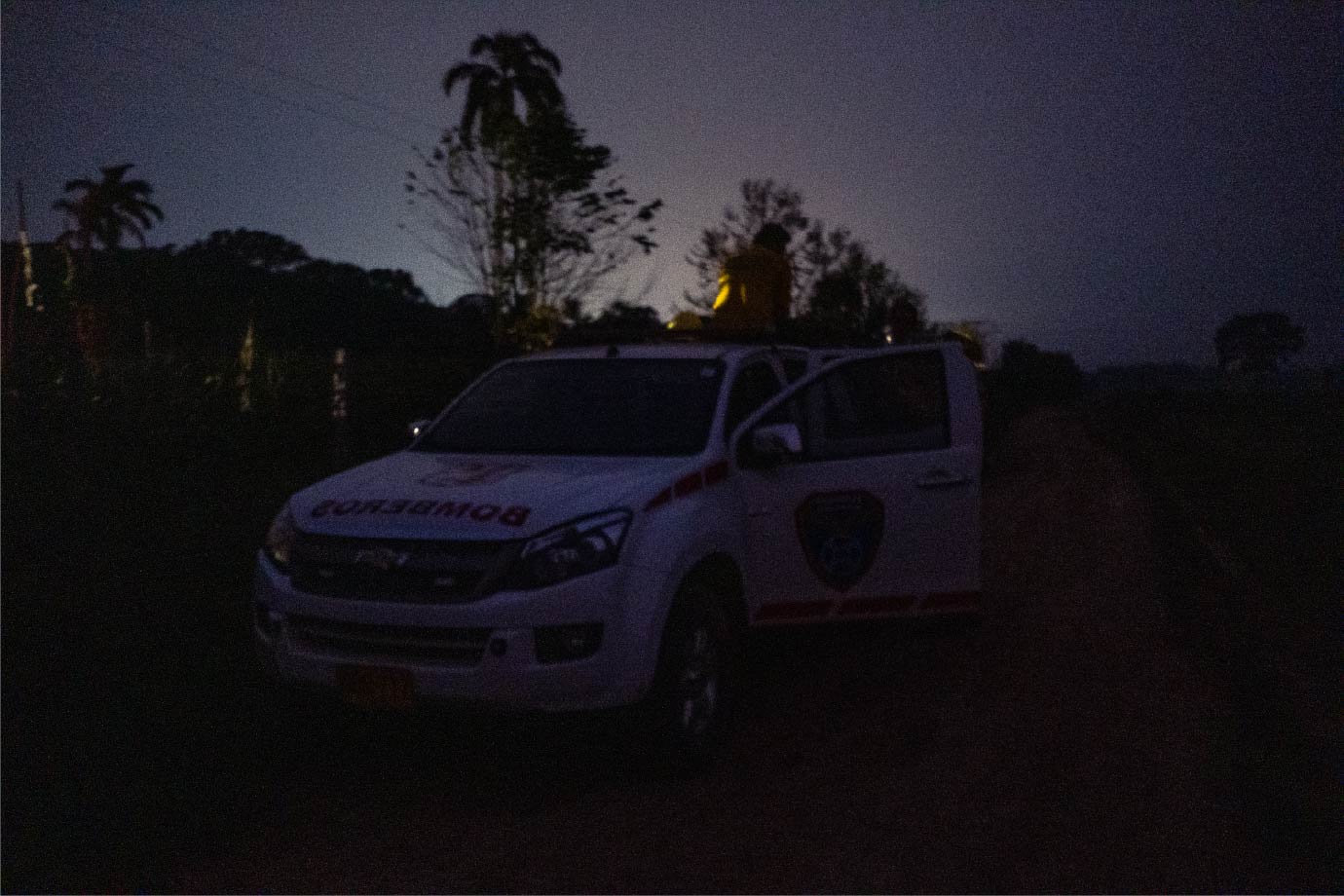
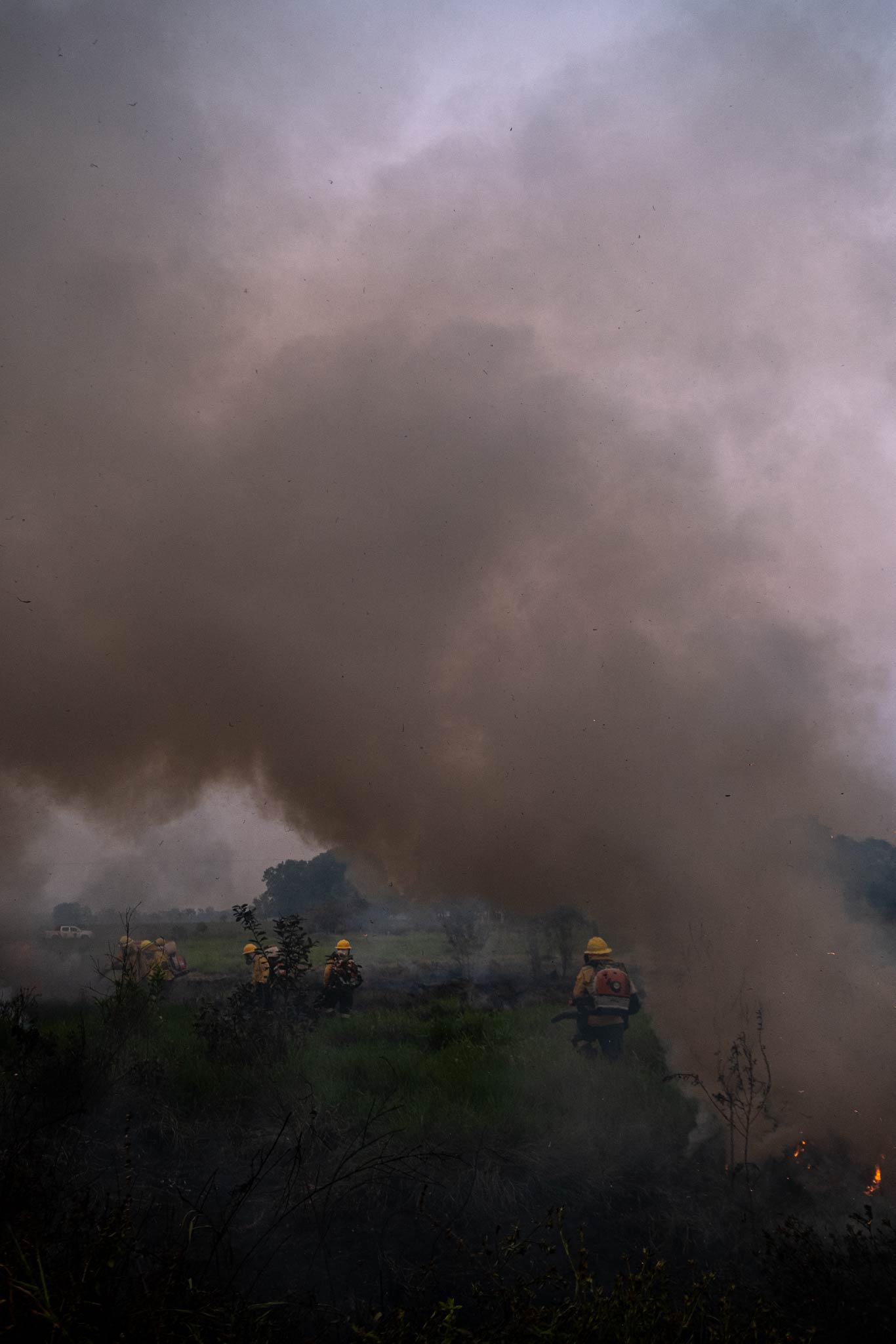


Cattle, on the other hand, promised well-being on both sides. First, because it is an activity that can become more lucrative than farming, although not necessarily more so than coca. While a crop is converted into coca paste after eleven months of plant growth and then the harvest can be collected every six months, cattle need at least three years for a cow to reach slaughter age. Hence the second, while coca is an illegal product and its growers are treated like the worst criminals, cattle raising is an activity that is not only legal but also clothed in an aura of virtue. In the Colombian countryside, there is nothing more prestigious than a wealthy cattle rancher.
The transition was not so quick. It took no less than ten years and occurred between the bloodiest episodes of the armed conflict. The implementation of the social, political and military components of Plan Colombia took the entire decade from 2000 to 2010. The end of the Pastrana government with its failure in the peace talks in Caguán, the two terms of the Uribe government and the inauguration of the Santos government. During this time, the Casa Castaño paramilitaries arrived to give life to the Centauros Bloc, which occupied the entire city of San José and the town of El Retorno, followed by the Omega Joint Task Force —the cream of the army, navy, air force and police. The battles of the First Front of the FARC, with support from other advances of the Eastern Bloc, against the Omega were on land with artillery and non-conventional weapons. There were aerial bombardments and numerous assaults by the army in different points of the jungle, which they entered by river. Meanwhile, the Casa Castaño was dismembering peasants. By the time the Santos government was already in peace talks with the FARC, at the beginning of 2013 or so, Guaviare was already a post-war zone. Anyone who continued to grow coca leaves was inevitably stigmatized as a guerrilla member. Anyone who opened up to owning cattle earned the respect of the state. What did not seem so obvious to the government’s reasoning was that cattle turned out to be an inevitably expansive activity: that a farmer with a bull and two cows after five years could already be a cattle rancher with twenty heads. And after ten years, he could already have about a hundred heads. To do so, he had to extend the fences on his plot. At least one hectare of fattening pasture for every head and a half of cattle. Or better: one for one. And in cases of low efficiency: one for every two hectares. In other words: to grow as a cattle rancher, a person had to extend the fence by cutting down the forest. By the end of 2016, Guaviare was already a place with fewer coca-producing areas: from the average of 14,000 hectares it had between 2000 and 2005, it dropped to less than 7,000 when the government and guerrillas were in the midst of signing the Peace Agreement. And it was also a place with lower rates of violence: while between 2006 and 2010 the homicide rate had fluctuated around 100 per 100,000 inhabitants, by 2016 and 2017 it did not exceed 24 per 100,000. The issue is that it was also a place with the most diminished forest: according to measurements by Ideam, between 2000 and 2005 deforestation amounted to just under 78,000 hectares, while between 2015 and 2020 it amounted to about 134,000. And a place with more cows: according to the Livestock Inventory prepared by USAID, in 2015 the department had 275,500 heads and in 2020 it already had 513,725.
As if one could infer a relationship between coca and cattle, peace and deforestation: the less coca, the less violence and more cattle; the more cattle, the more deforestation. Therefore: the more deforestation, the less violence.
—With the change from coca to cattle, people began to manage their farms differently —explains John—. With cattle, the farmers learned to stay and take care of the property, not to have to run away like the coca growers had to. The farmers have stayed to take care of the cows because they are theirs and they can say it up front. They could not defend coca up front because it is a crime. With cattle, everyone is within the law. What is not legal is cutting down the forest. But once it is laid down and planted in grass and full of cows, no one is going to come and say anything to it. The cattle boom is now. Now you see four or five trucks of meat parked on the street. Before, you didn’t. Now you see warehouses of agricultural supplies on several blocks. Before, you didn’t.
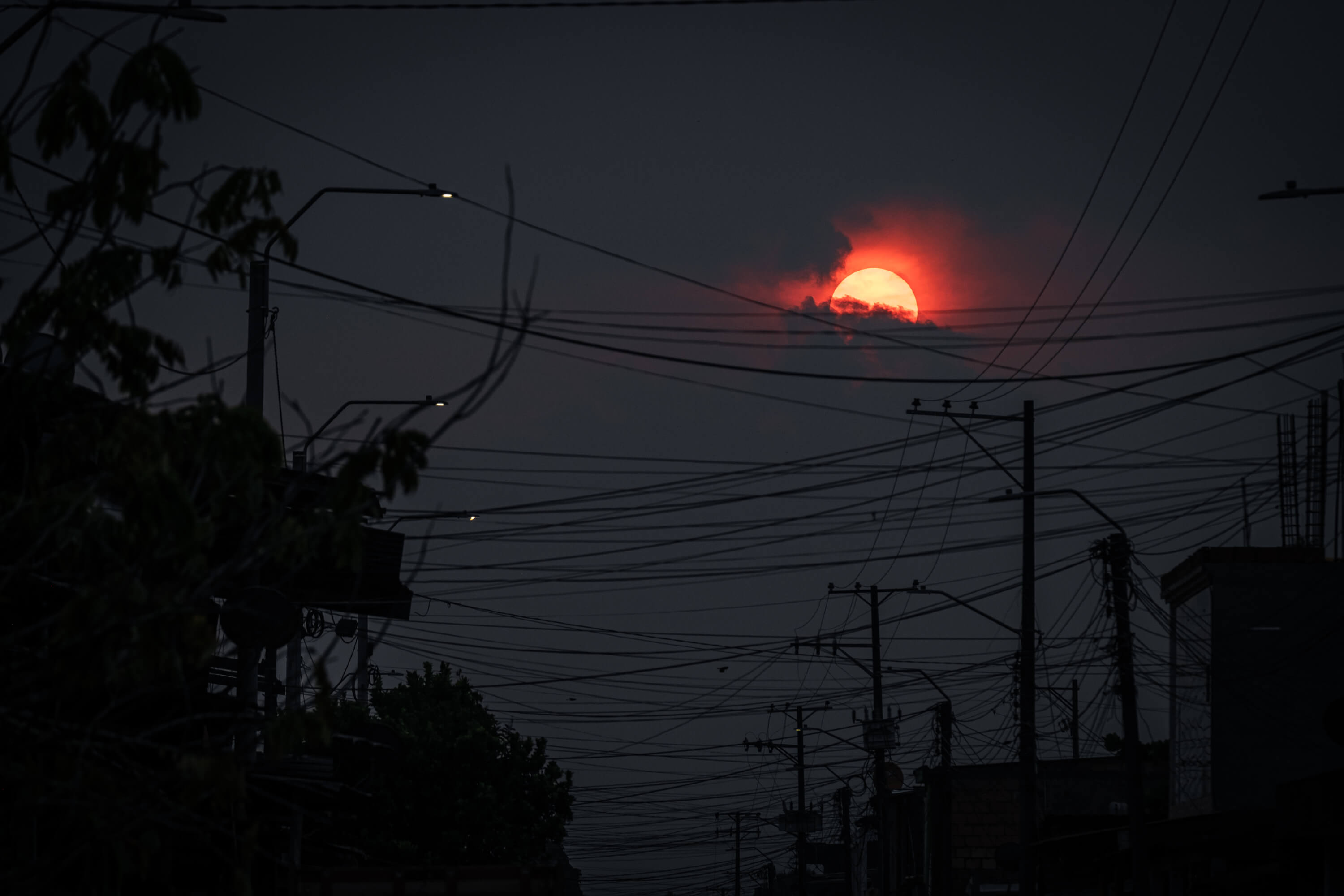
9.
The siren sounds again. It is Thursday and the afternoon is beginning. The information that the firefighters receive in the call for help warns that the fire is large and not close. The two trucks outside the Station have their doors open so that everyone who fits can get in. On the protective fence of the school in front of the Station, children in uniform gather to cheer on the firefighters. The first truck leaves, driven by John. Five minutes later, the second one leaves with the wheel in the hands of Muñeca. I am in this one. My coworkers, Victor Galeano and Carlos Piedrahita, photographer and videographer, left in the first one.
The place of the flames is a vast pasture that we reach after a forty-minute drive along a red dirt track. The fire does not occur on the side of the road. You must cross a pasture with electrified fences. Margarita, standing at the foot of the truck, tells me that this has always been a problem: going to put out a fire in a place that is protected by electric fences to corral the cattle.
—We’ve gotten some very nasty shocks…
The drone shows that the fire may have already consumed more than fifty hectares. And it doesn’t stop. Its origin seems to be no other than what has already been explained: the settler of these lands cut down the bush and set it on fire. As the sun hasn’t gone down for three days, the flames grew with particular fury.
Ángelo and Chitiva, the two most daring, jump out of the truck and the Martians stand behind them. Margarita, who knows how to recognize the hidden soul of a fire, puts her hands on her son Ángelo’s shoulders and tells him to be very careful, that this fire is very dangerous, to get out as soon as he senses the danger, not to wait until the fire is in front of him. Ángelo seems to hear her. She gives him a kiss and he puts on his smoke mask. I watch him go into the pasture behind Chitiva. I get my smoke mask ready and tighten the laces of my boots, to go after them. Muñeca stops me to ask:
—Do you want to help?
And in less time than it takes me to say yes, I already have the cacorro hanging on my back, 25 kilos of water supported by my shoulders. When I reach the first circle of flames, I find out that John has sent the instruction by radio to put out with more fire. The technique is called “Counterfire” and it is a decision that is only justifiable in extreme cases: when the firefighters understand that the available equipment and personnel will not be enough. It involves creating a wave of flames that advances towards the center of the fire so that, when they meet face to face, they extinguish each other. The chemical effect occurs because between the two of them the combustible materials are exhausted, and they run out of energy. The risk is very high: that the wave created will disperse in other directions due to rebellious wind currents, that it will gain unusual power due to an unforeseen combustion or, ultimately, that it will take a long time to reach the source of the fire and burn areas that it should not have burned.
Chitiva and Angelo are coming back to where I am. I see them come out from the flames. They walk calmly, but they express anxiety. They used the Martians to shoot jets of air and water into the heart of the fire, and they did not do much to it. Muñeca has brought John’s instructions and informs three settlers who seem to be the owners of the neighboring properties. One of them pounces on some bunches of grass and sets them on fire from the stem with a zippo lighter.
—And me needing this grass for the cattle —he says, frustrated.
Muñeca gives me the instruction: while Angelo and Chitiva stand at the other end of the fire to corner it, I must shoot jets of water with the cannon at the shoots of the backfire that want to overflow.
The backfire grows quickly, the flames rise up to my waist in no time. I try to reduce them with water sprays. The wind throws smoke at me. A blue and grey cloud. Something manages to filter inside the protective mask, my eyes water and my snot turns to water. The smoke envelops everything and does not let me escape. But I cannot escape. We must control the shoots of the backfire. The cough. Sniff the snot.
Twenty minutes. Smoke, fire, jets of water. The cough. Sniff the snot.
Thirty minutes. Smoke, fire, jets of water. The cough. Sniff the snot.
One hour. Smoke, fire, jets of water. The cough. The snot. The cacorro weighs less and my back can no longer resist a cramp that climbs up my spine. Muñeca appears telling me to leave it like that, that it’s time to wait for the backfire to finish putting it out.
I cross the pasture diagonally, as if approaching the command post set up at the foot of the first truck. I see the disaster from within: the trunks of what were century-old trees are scattered on the ground after they had been cut up. In one corner there are some that were put as seats on the road. In the background you can see what remains of the forest: splinters of what were native species, scorched brushwood, a few upright trunks that peek out as the wind dissipates the smoke. Charred branches. The image bears some similarity to that of the end of a hand-to-hand battle between two armies: all the death is seen lying on the ground, each tree like a fallen soldier; The few who are still alive are standing upright despite themselves. What was lush forest two weeks ago is now a polygon measured in hectares of ash.
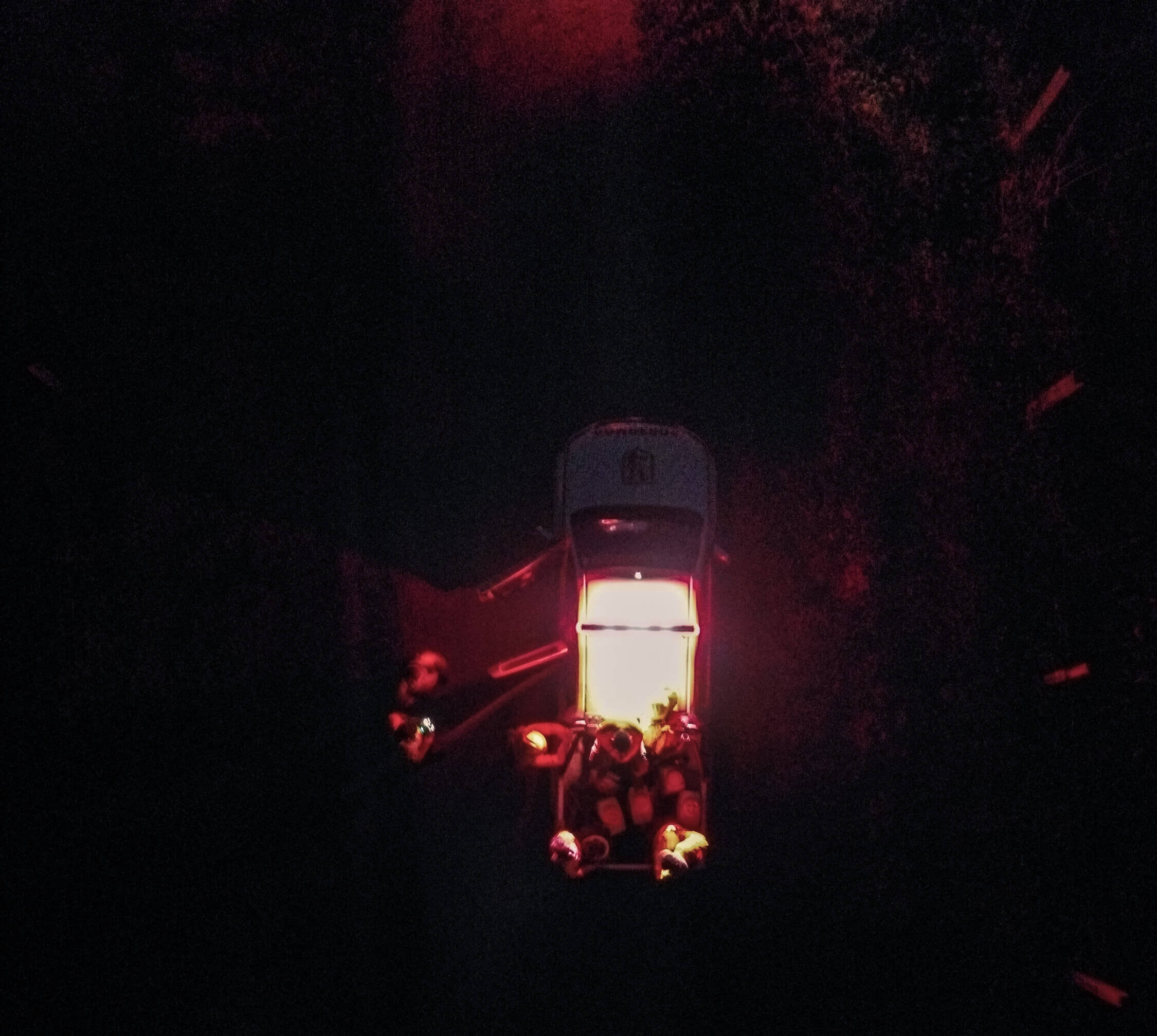
10.
Last night at the hotel, the idea that kept flashing in my head was this: there are two types of fires in the Colombian Amazon, and both are deliberate. The first type of fire burns the primary forest, that is, the centuries-old forest mass. It is the fastest and most effective way to break up the ecosystem and tame it by the hands of the settlers. The second type of fire occurs days later, after cutting down the trees that were left standing, to make the ground available for sowing grass. The settlers never call the fire department when they cause fires of the first type, no matter how serious and damaging they are. The settlers ask for help when they cause fires of the second type, but not always, only when they get out of control.
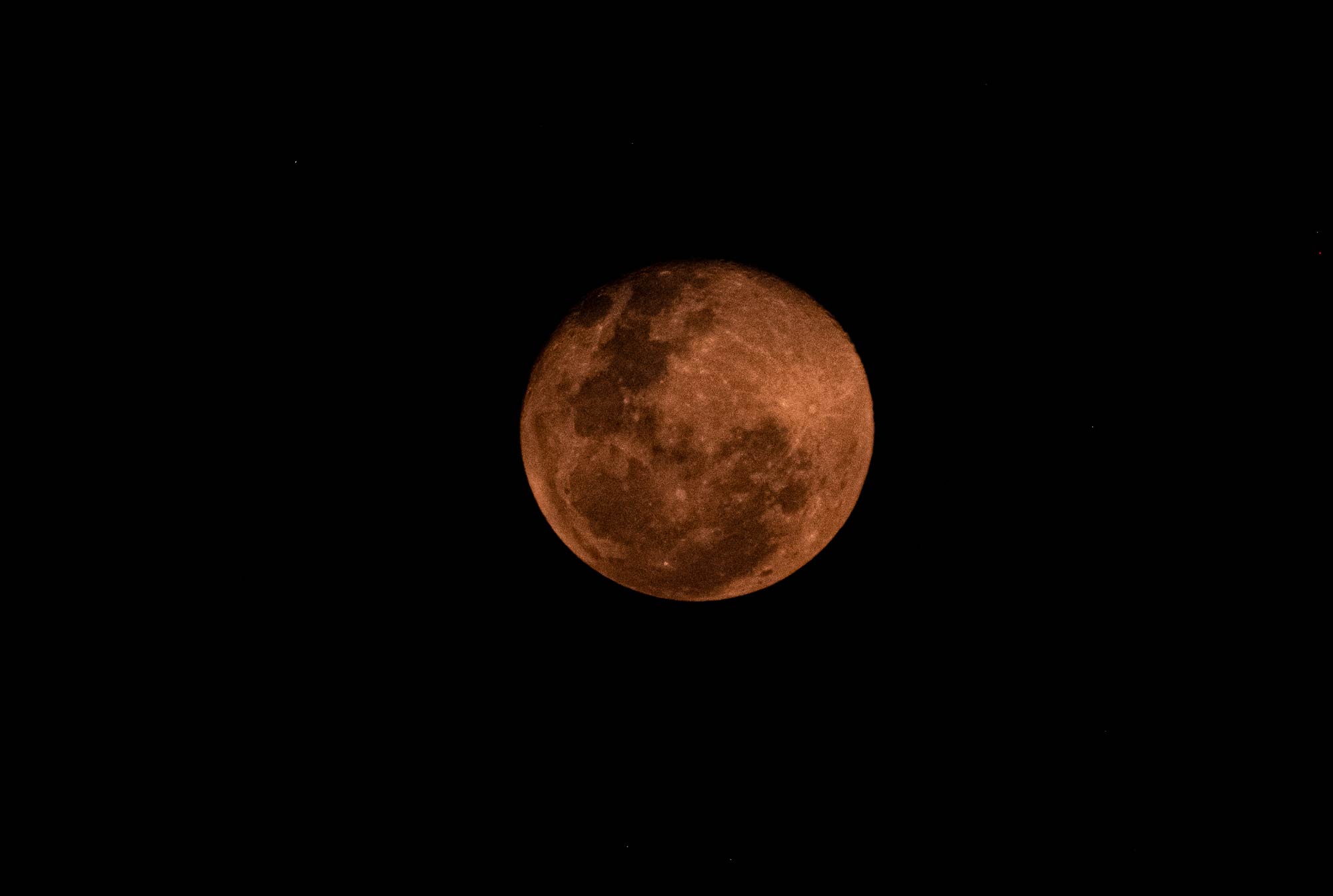
11.
Alex Guzmán, the deputy commander of the Station, brought us to this farm, which is the last one before the untouched primary forest begins. The trail was an hour long and we always went south. The fence around the property begins long before reaching the main house and you can see the struggle between the hand of the settler and the natural resistance of the jungle. I say this because there is a lot of forest still standing, even though there are clearings of grass in the thicket. A gang of scarlet macaws flies from treetop to treetop. And there are treetops that are more than five hundred meters away.
Behind the house there is a path that leads into the jungle. First, the path of the Itilla River Indigenous Reservation. And then, much further on—about ten kilometers—there is the Chiribiquete one. Either of the two requires crossing the Itilla River, which in this section is wide and has steep edges. On the way down from the house to the river, the dissident splinter of the FARC guerrilla group called the Central Major State, EMC, has a banner hanging announcing that this area is their domain. It is worth saying that what once was the First Front never entered the peace process. It was always around here taking advantage of the opportunity to join or let itself be absorbed by this dissident group. For an hour, we three reporters walked the fragment of jungle that remains on this farm and for which we do not have to cross the river. We see the tracks of a chestnut horse, birds with guttural songs and some playful and colorful apes that look at us laughing from the tops of the trees. This forest allows us to see something of what the area was like: prodigious trunks with a leafiness that hides the sun, ferns and bushes that tie the vegetation together, and the permanent suspicion that there are camouflaged animals that observe us. I ask one of the locals who is staying at the house and who lives an hour upriver, under total control of the EMC, about the rules of this armed group to preserve the forest. He tells me that they allow people who have just arrived in the area to cut down forest as long as they do not have land, but those who already have a good amount are not allowed to do anything.
—A landowner who already has 200 or 300 hectares is not allowed to cut down more forest —he says—, but someone who is just starting out is allowed to cut down 40, 50, 60 hectares.
—And if someone who has a lot of land cuts down more forest to have more pasture, how do they control it?
—First they warn. So that everyone knows. Everyone here knows. And if someone does not comply, they kill him.
—I understand that the EMC allows forest to be cut down if the person is just starting his own farm.
The local nods.
On our way back to Calamar we passed by a piece of land that burned all night, and which still has some flames between the wood of the incinerated trees, showing the cruelty that man inflicts on this ecosystem: everything, absolutely everything, that a day and a half ago was life — leaves, roots, branches, trunks, animals — are now incinerated remains. Of course, yesterday nobody called the firemen to stop this destruction.
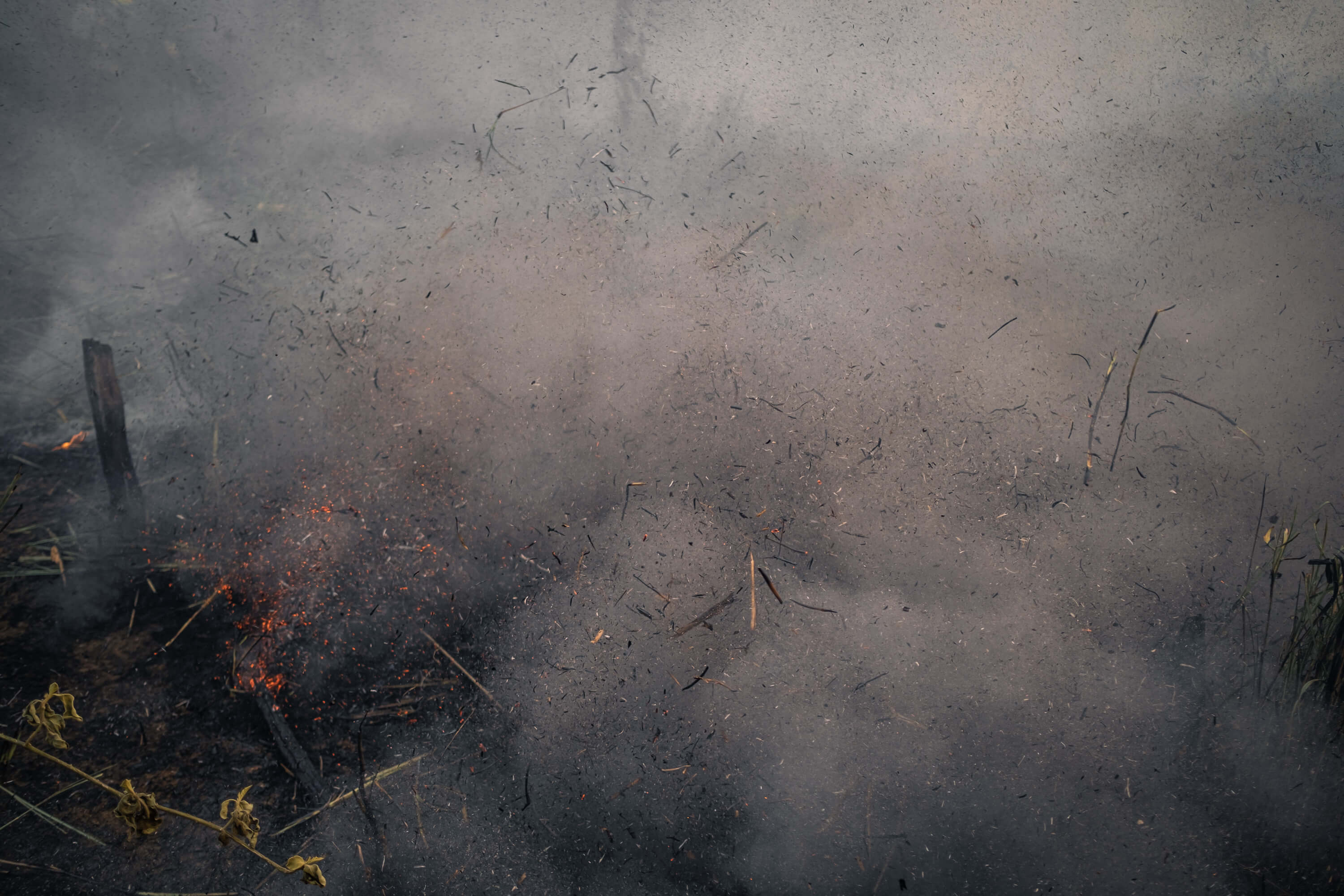
12.
12.
—It seems to me that they are using you.
—We do our job—John answers me—. We go put out the fire. We don’t ask who started the fire or who caused the fire. That is for the judicial authorities to find out.
—I understand. What I mean is that they call you to put out the fires that they want to legalize. Let me explain: a settler burns a piece of land and calls you and says there is a fire. You go and put it out. The person who called is registered as the person who was concerned about stopping the fire. And not as the person who started the fire.
—Yes, that may be the case. People are burning even though the Government has prohibited any burning at this time.
—And you, who are aware that they are using you to legalize fires, cannot do anything to oppose it.
—Our mission is to put out the fire, to prevent fires. If someone calls for help, we are going to help.
—Without asking.
—Without asking. The ones who should finance the fire department here are the ranchers. The ones who make us turn our backs the most are the owners of cattle farms. If you analyze, in times of fire, the firefighters end up being the farm workers. It’s our job to put out the fire, take care of the animals, the fence, the little bit of forest they have left. We never get to find out who lit the fire. Lighting the fire is a crime; finding out is lending ourselves to the problem. We just come to put it out. Nothing more.
13.
The question of who is burning the jungle goes beyond the purpose of this article. I have used the word “settler” being aware that it is not the most accurate. The concept has been formulated by the social sciences to define people who came to an uninhabited, perhaps unexplored region, to build a handful of houses and give space to a community that had no land. The colonization of vacant lots has been the constant of the urban development of the country. Such was the widely cited “Antioquian colonization” of the forested lands that today are the Coffee Belt, back in the 19th century and early 20th century. Such was the “Colonization of the Plains” of the Orinoco forests, also in the 19th century and part of the 20th century. It is assumed that the Guaviare colonization took place throughout the 20th century and that the most intense colonizing wave was the product of the enthronement of coca cultivation as a mechanism for building a future linked to armed insurrection. It is assumed that this migratory movement towards these jungles, which occurred during the seventies and eighties and part of the nineties, had already completely configured the urbanization of the four municipalities of Guaviare. And it turns out that now cattle raising has become a new reason for the arrival of a number of people that some academic may later end up validating as a fourth wave of migration. John explains it to me like this:
—Many people have been coming from the Eastern Plains, from Boyacá, from Santander. They sell the plot they had there. They bring about a hundred million pesos that are not enough there for anything, but with that here you open a farm of more than a hundred hectares. People with a lot of money have also come, rich people, people who do not mind five hundred million pesos. With that here they buy a lot of land, a lot, and they cut down all the forest they want.
Of course, there are reports that do not speak of new settlers. They talk about “land grabbers,” people who do not cut down the forest to build their house and develop an economic activity, but to become the owners of more land, to increase their wealth and become landowners, to obtain power from their role as almost feudal landowners. About this, Infoamazonía published an investigation in 2019 that pointed to important politicians from Guaviare and some businessmen as the faces of the “land grabbers.”
—I understand, John, that as long as new people continue to arrive with the desire and the means to become the owners of land, the forest will be burned and turned into pasture. As long as people continue to arrive with the desire to colonize vacant lands in the south of the country, the forest will be destroyed.
—As long as people continue to arrive with a desire for land, the forest will be razed.
Whatever the case, new settlers or land grabbers or both, their success depends almost exclusively on the military dominance exercised by the illegal armed group and the ways in which they reach agreements or businesses. There is a record that on November 23, 2023, the armed group that was formerly the First Front of the FARC and is now part of the dissident group called EMC called a meeting in Puerto Zancudo, a place reached by the Unilla River. Settlers and merchants attended and were in charge of spreading the message: all deforesters were threatened with death, although they allowed those who barely managed to open the area to cut down five hectares. And although they did not confirm it to me themselves, I learned from reliable sources that both the delegate of National Parks and the delegate of the environmental authority CDA were also under death threats.
The day before we left the region, all the merchants in Calamar received an image on their WhatsApp with a message signed by the EMC ordering them to raise the price of beer starting that same night. And so it happened: from that day on, a bottle of any brand of beer was worth 500 pesos more.
14.
—Being a firefighter is a sacrifice, it is suffering—John tells me—. Sometimes you want to run away and leave this. But no. You put your head down, you bear it and you carry on.
—Do you put your head down because you feel that it is an unfair situation? Do you feel that firefighters give a lot and receive little?
—As I tell you: firefighting is a sacrifice. Helping people has its value. Lack of salary, support, things that the boys need to do their job well are always lacking. Firefighters need to be well: stability, food, clothing, housing. As the saying goes: “You are hungry, you eat shit.” Anyway, it is my life, I chose it. I never scraped cocaine, never on a cattle ranch. I wanted to distinguish myself from others and I was good in the water. I realized that having too much money was bad, look at the cemetery and the jail and you will see that they are full of people who wanted to be rich. We are here with very little, but we are calm in our daily work of preventing people from dying in a fire.
